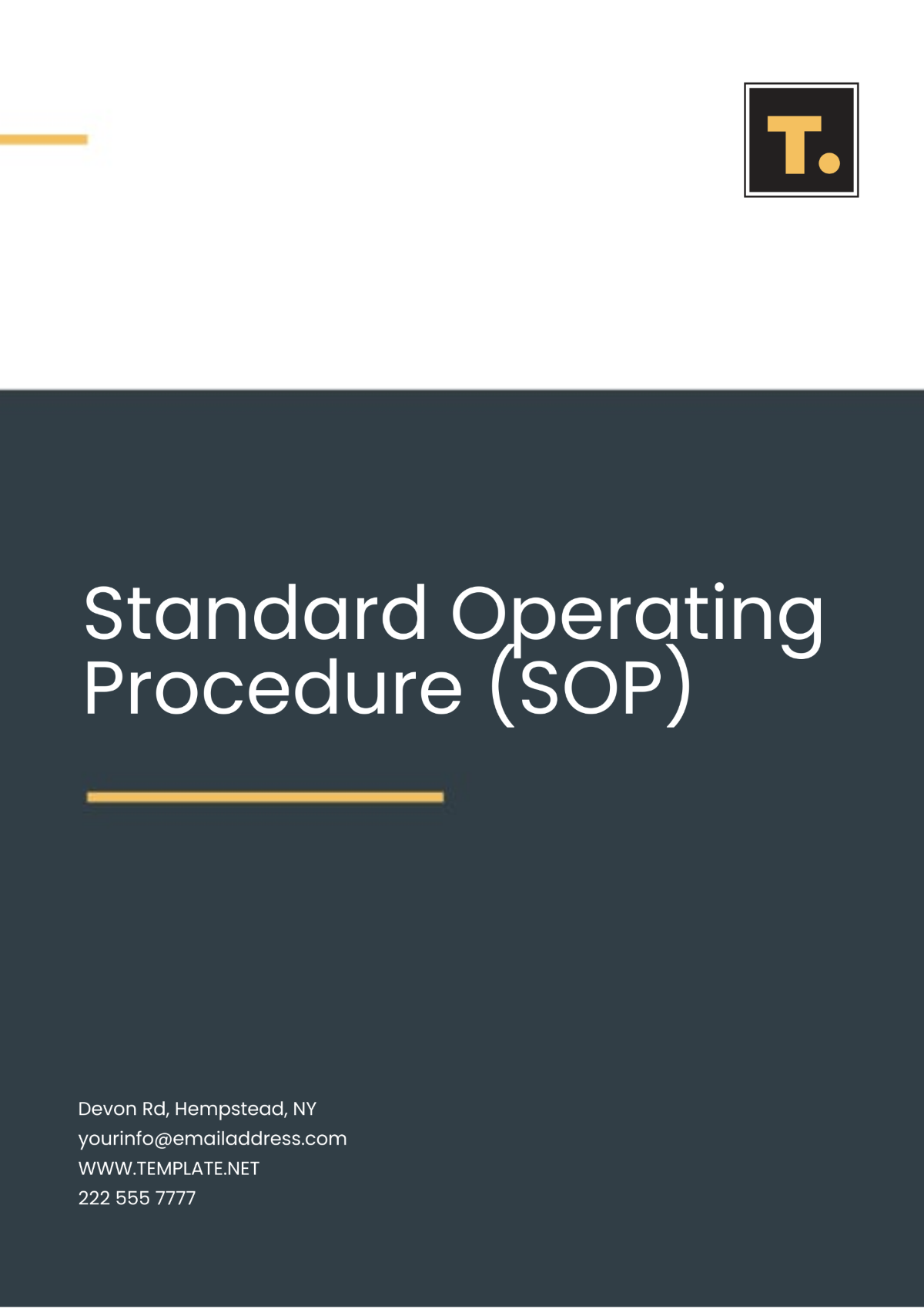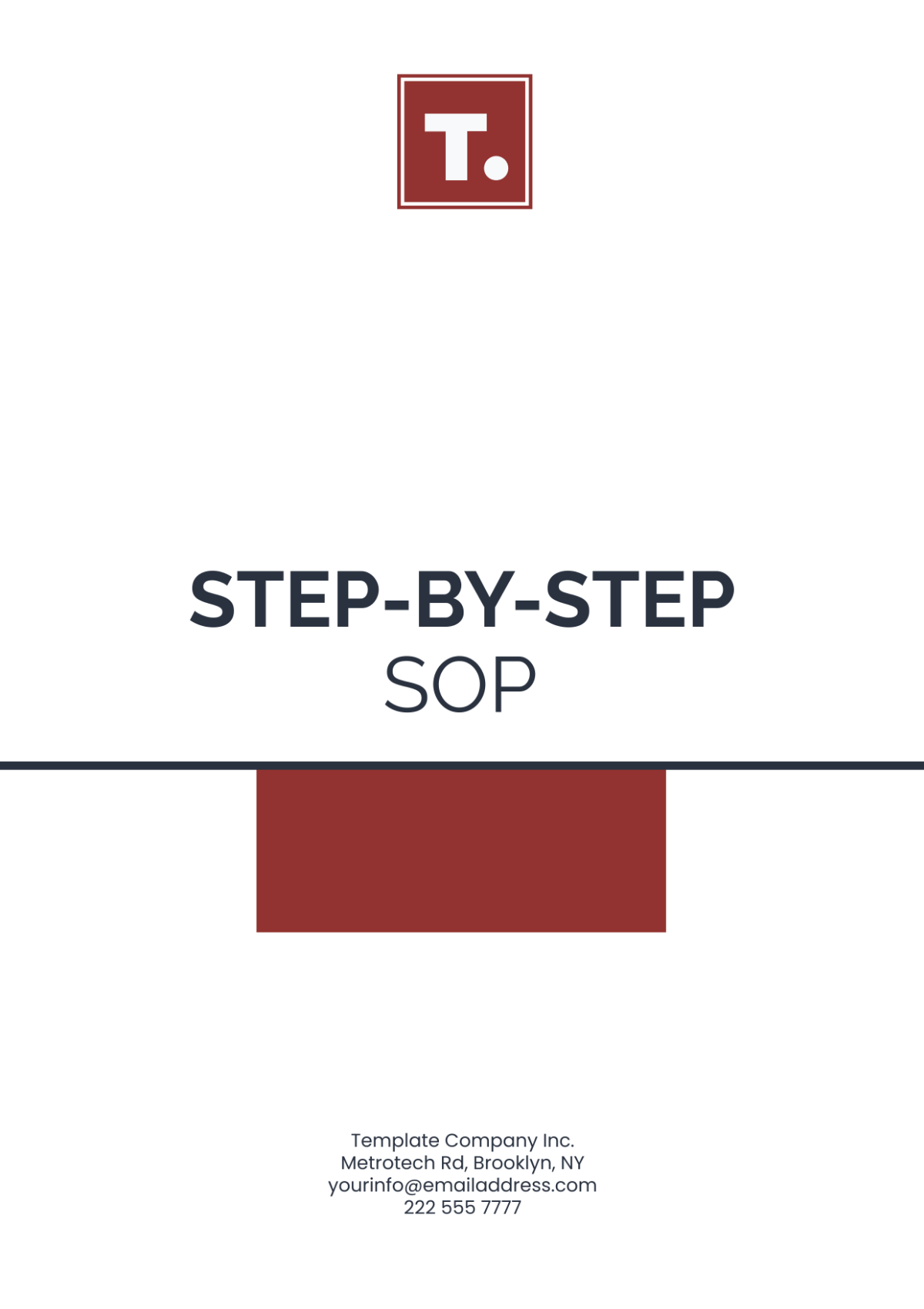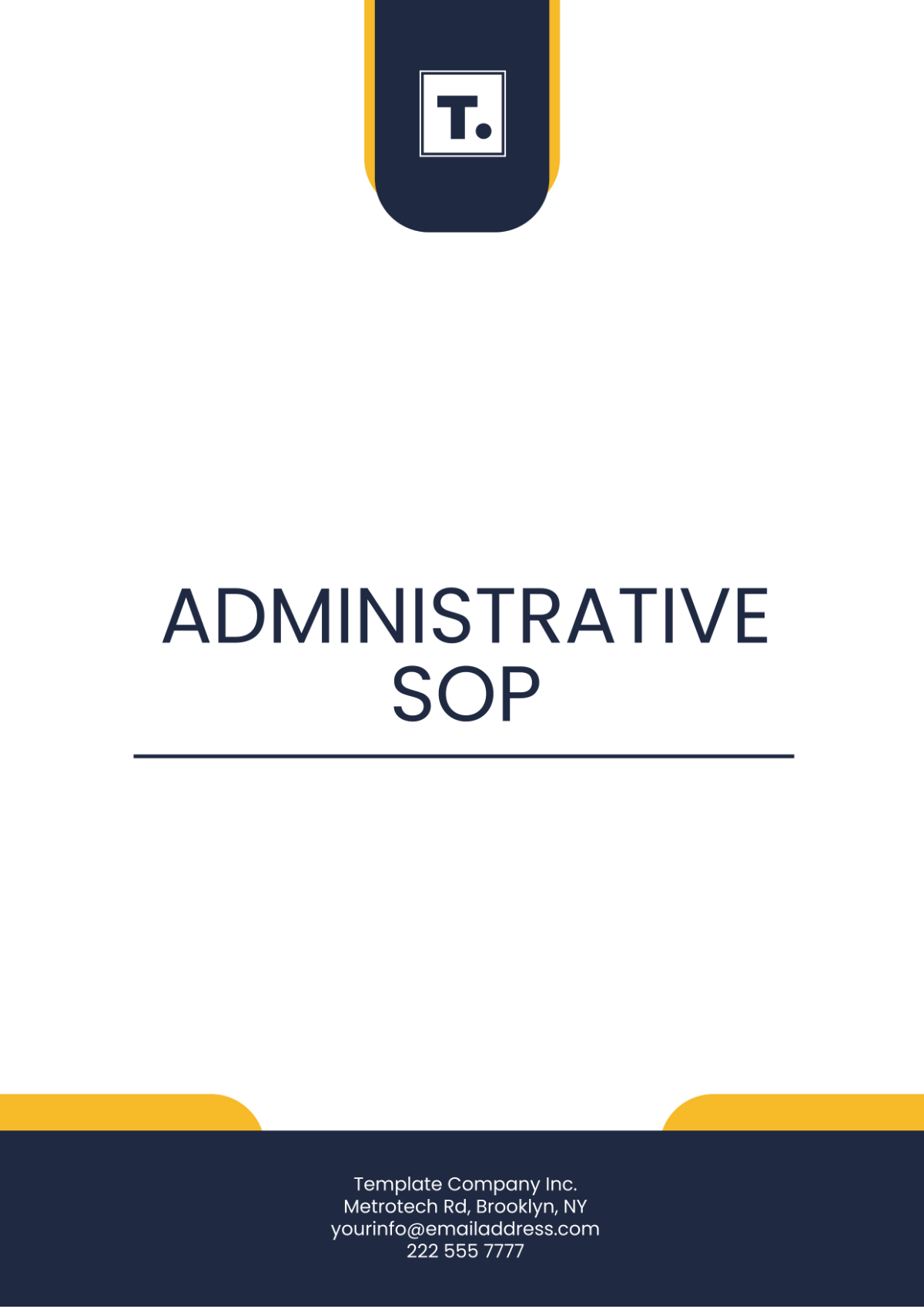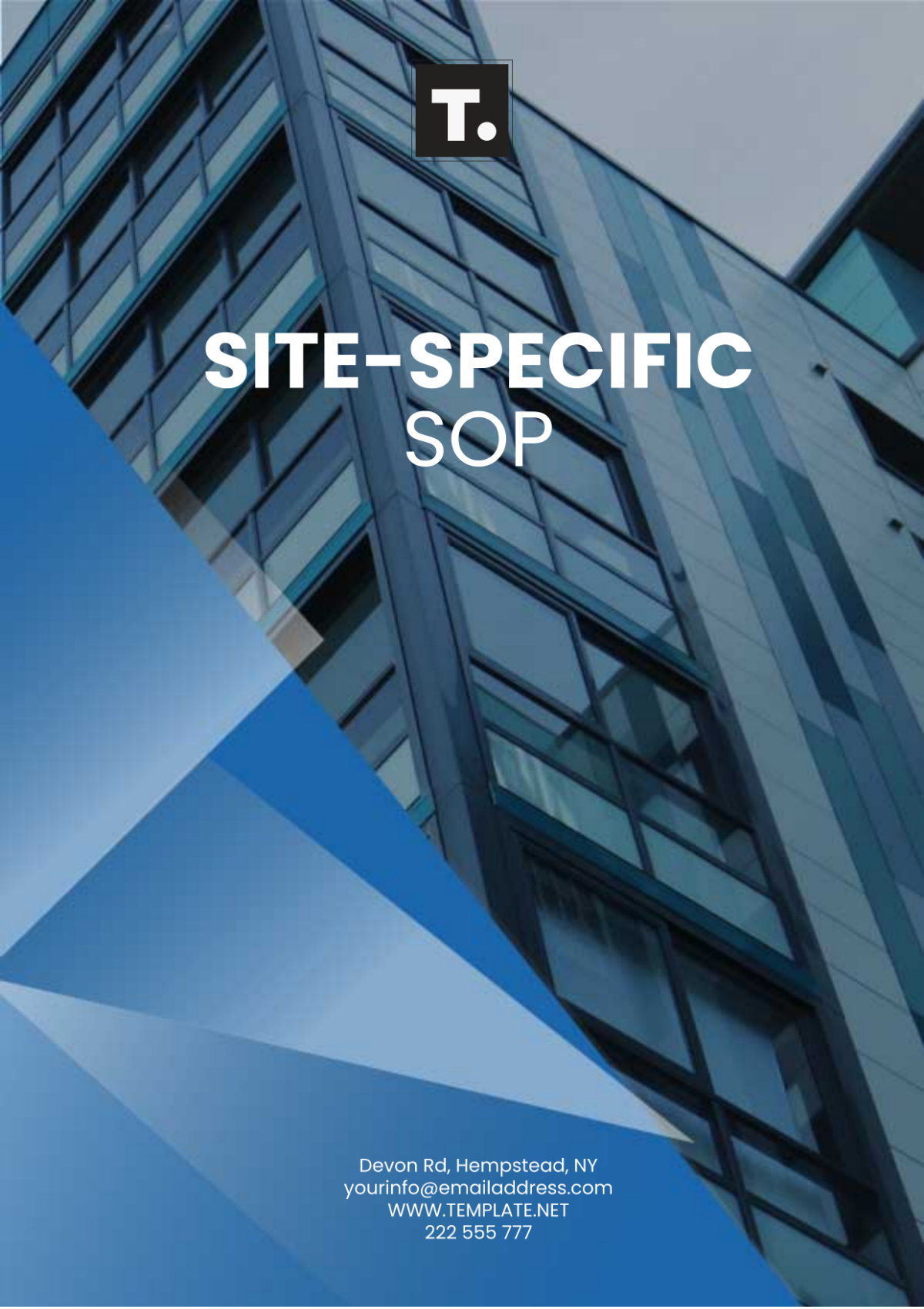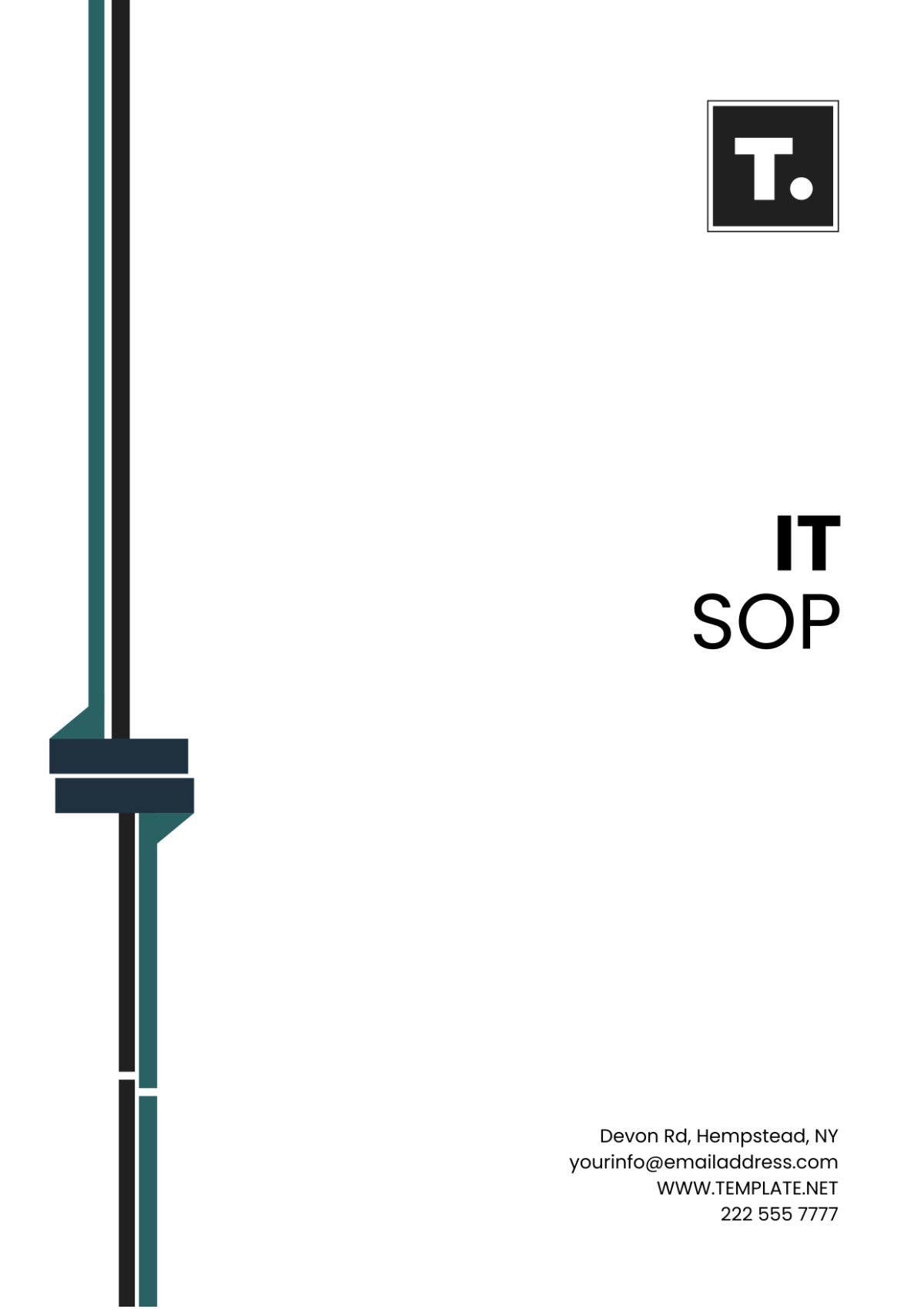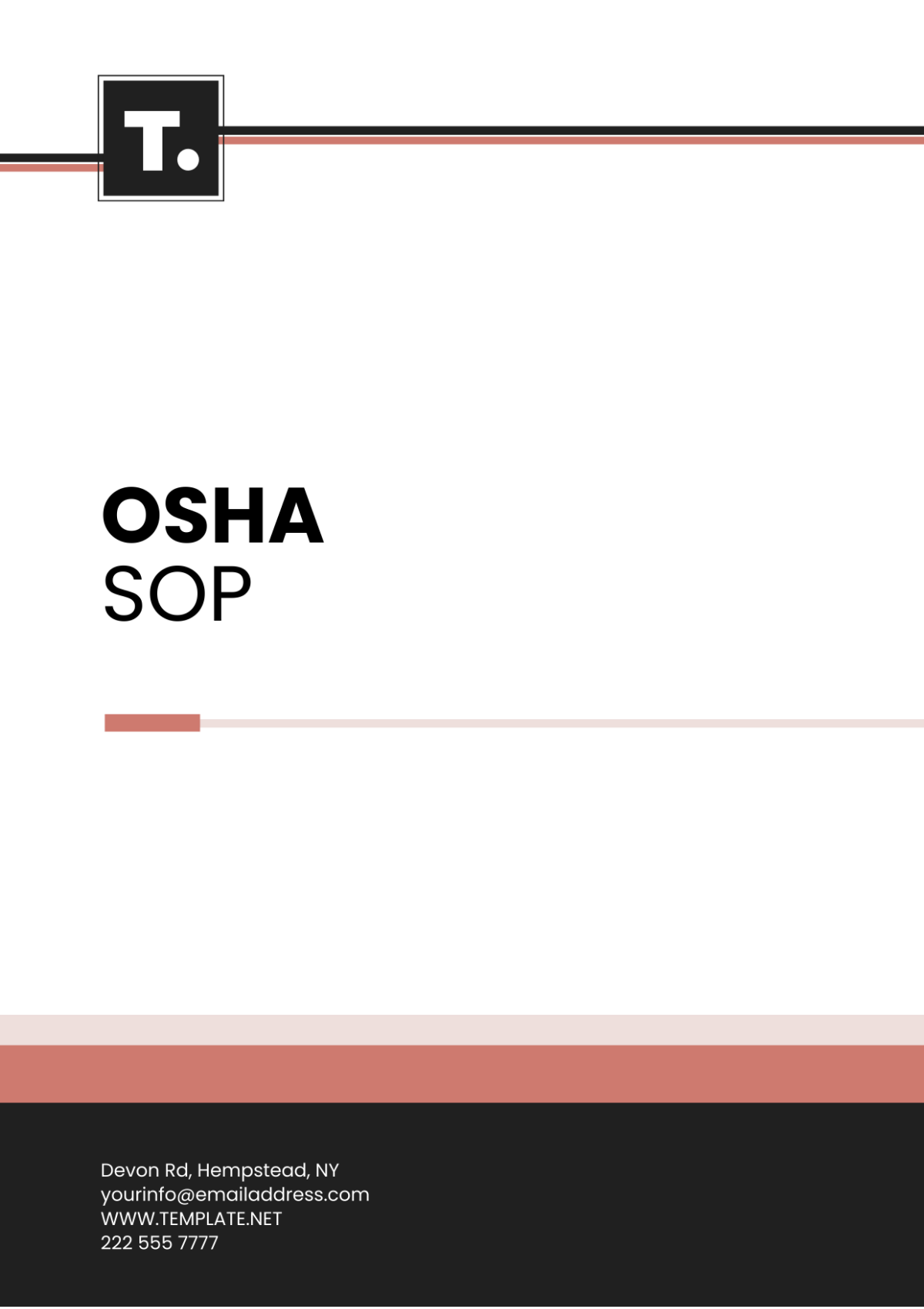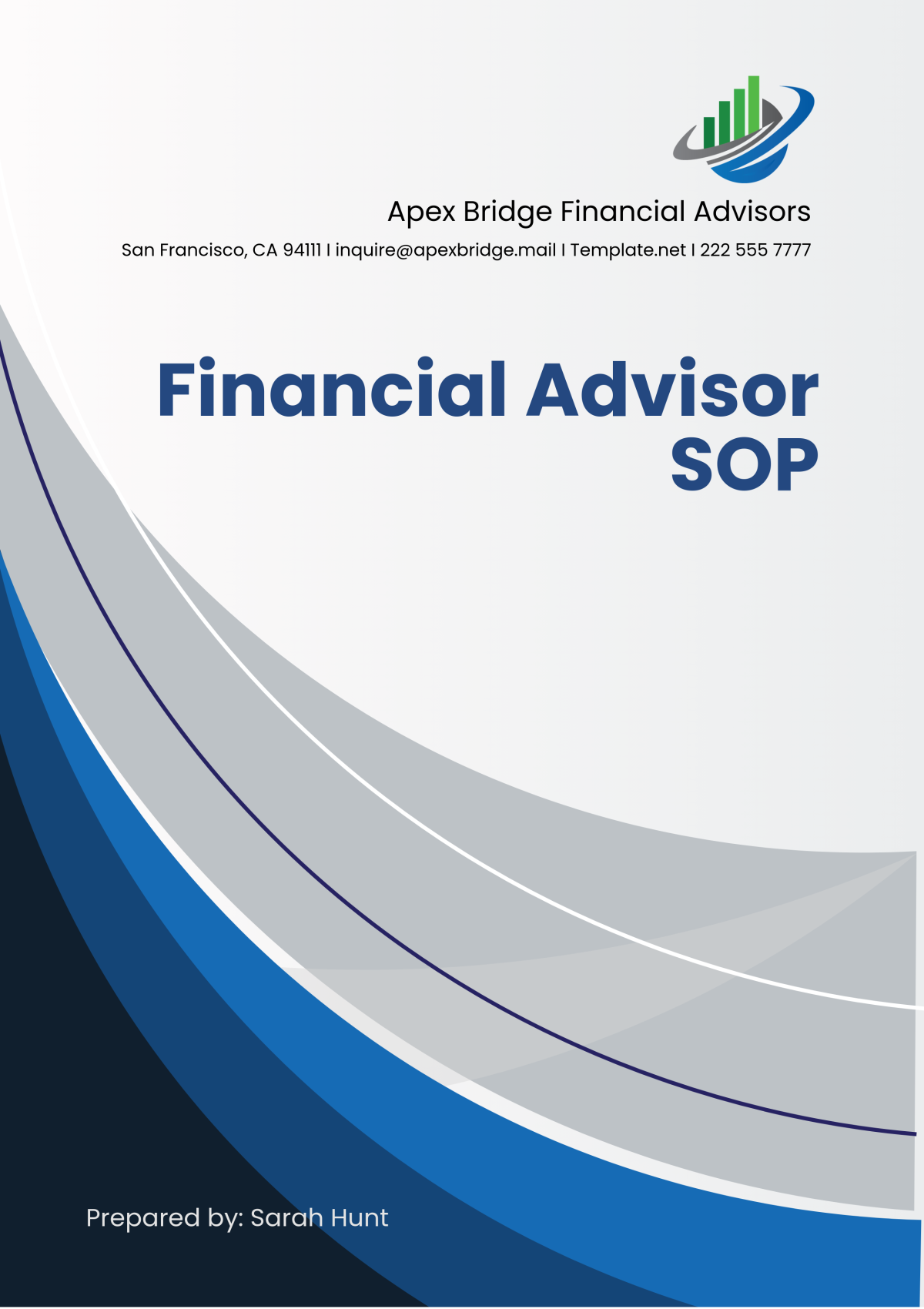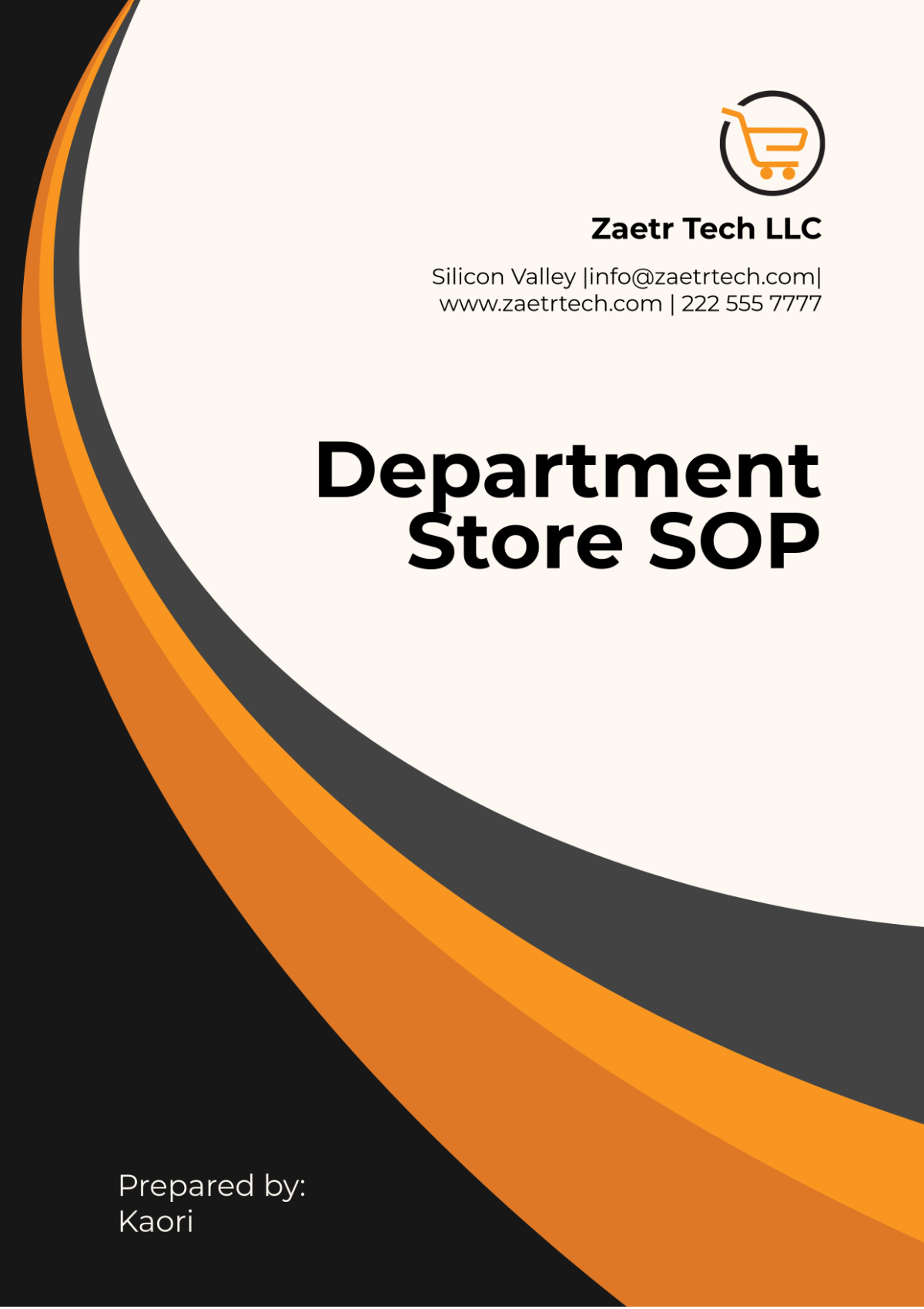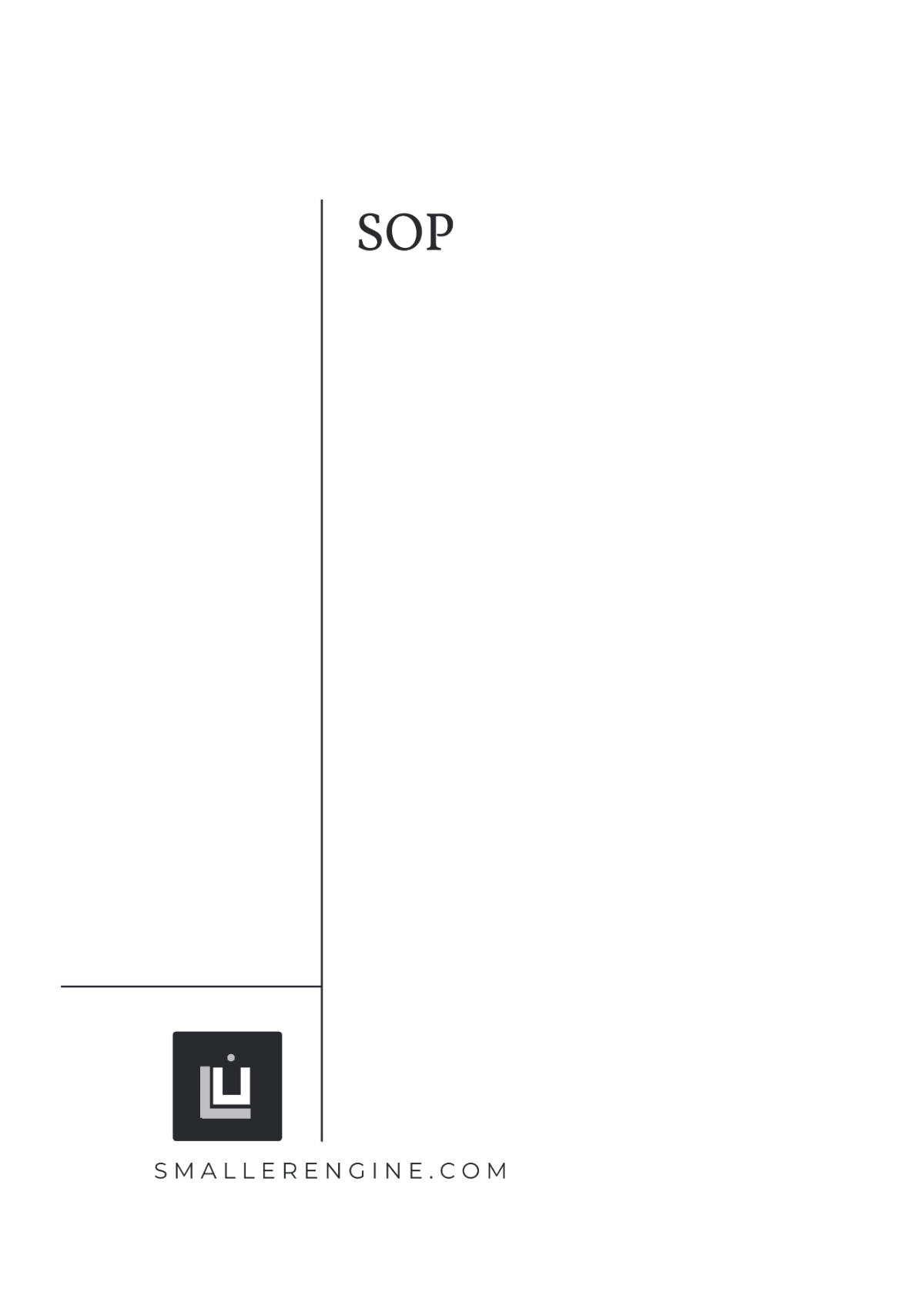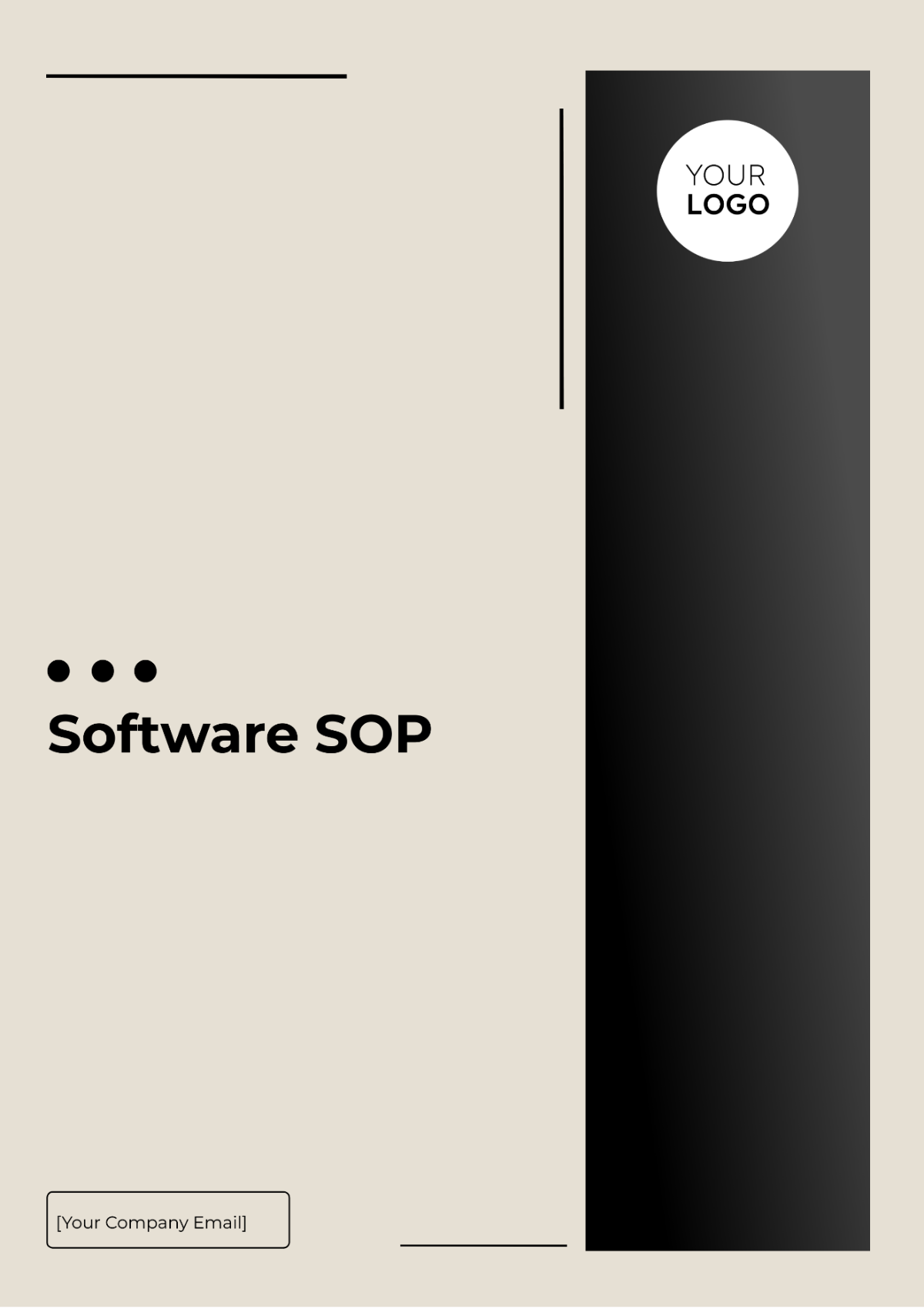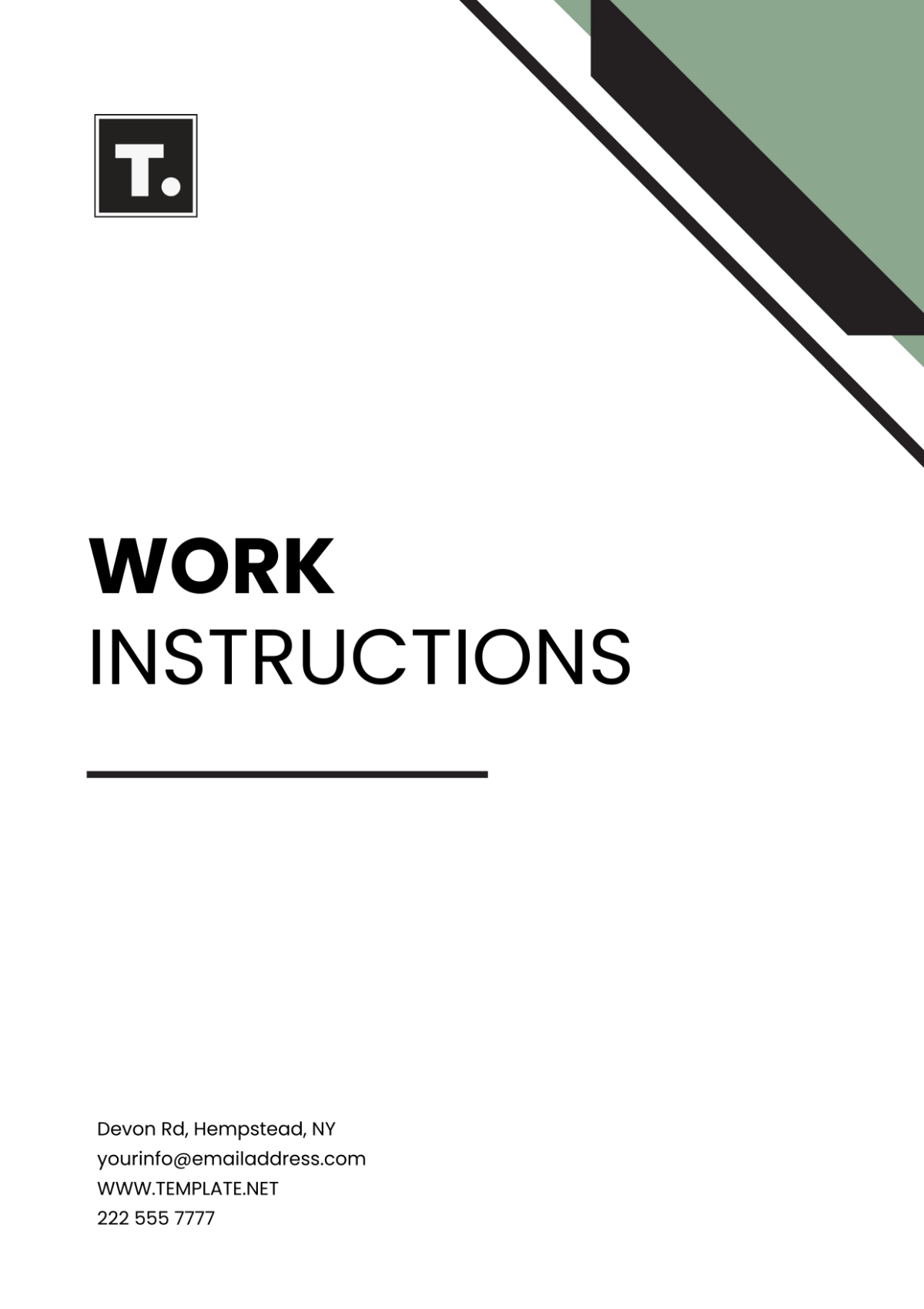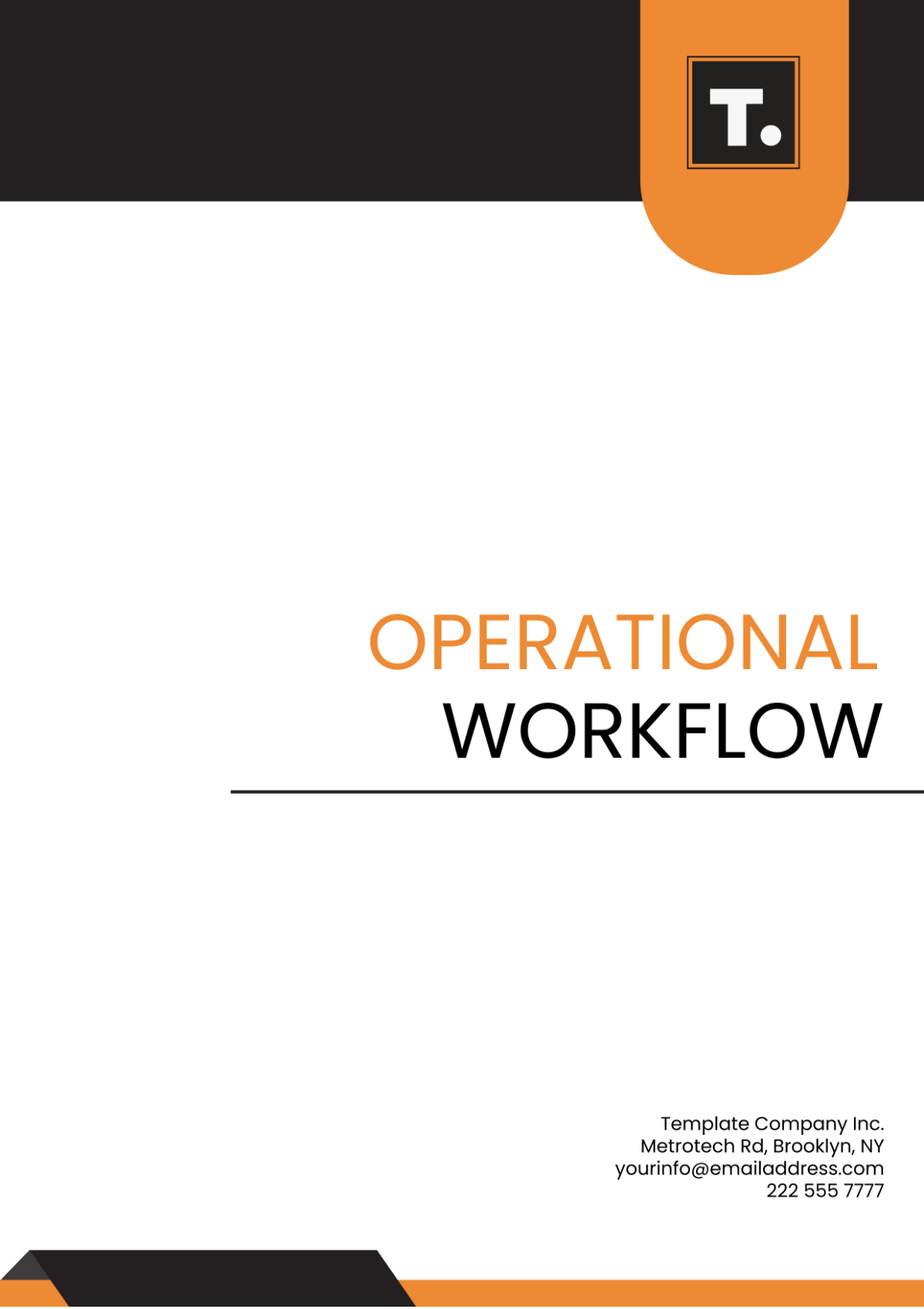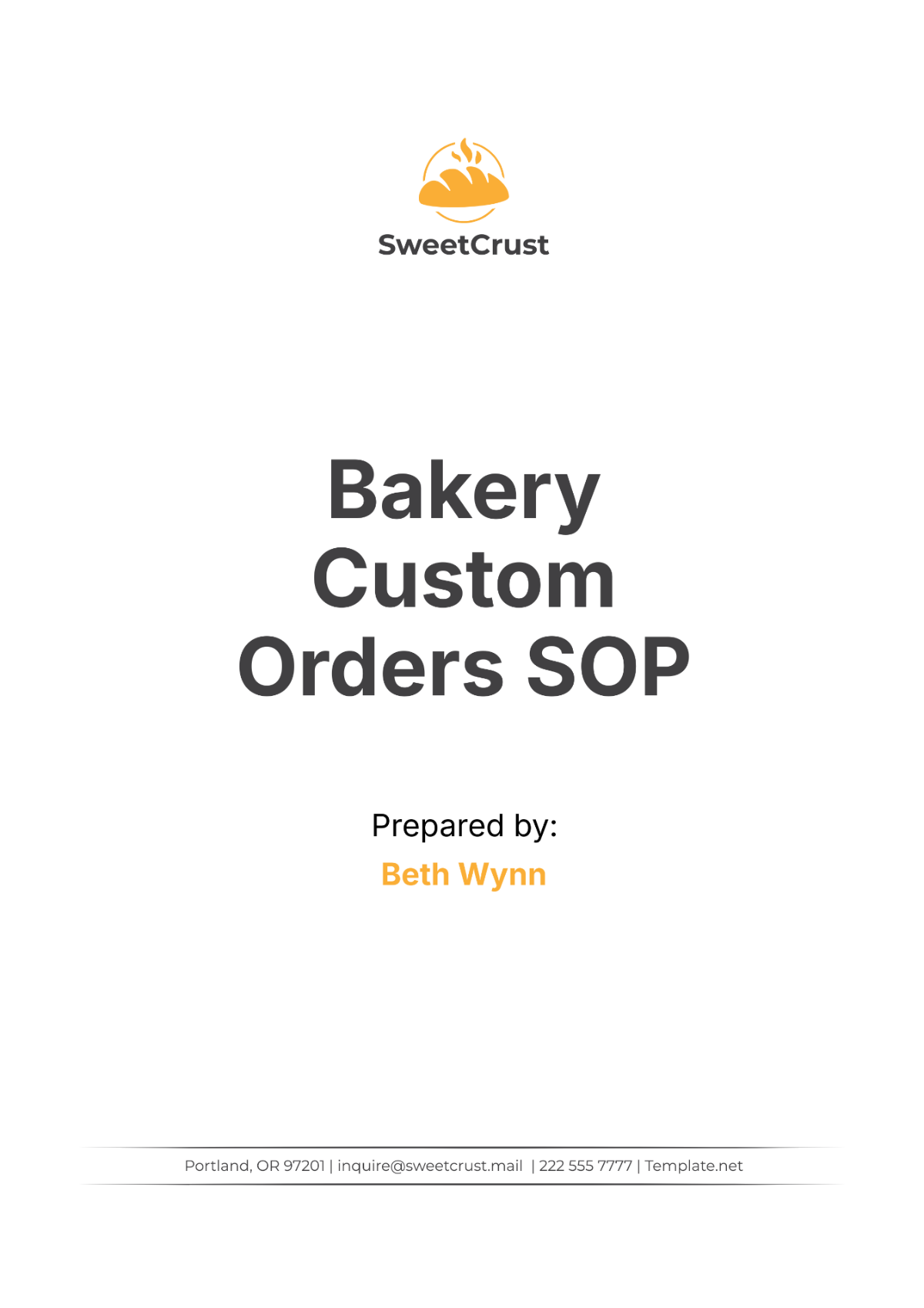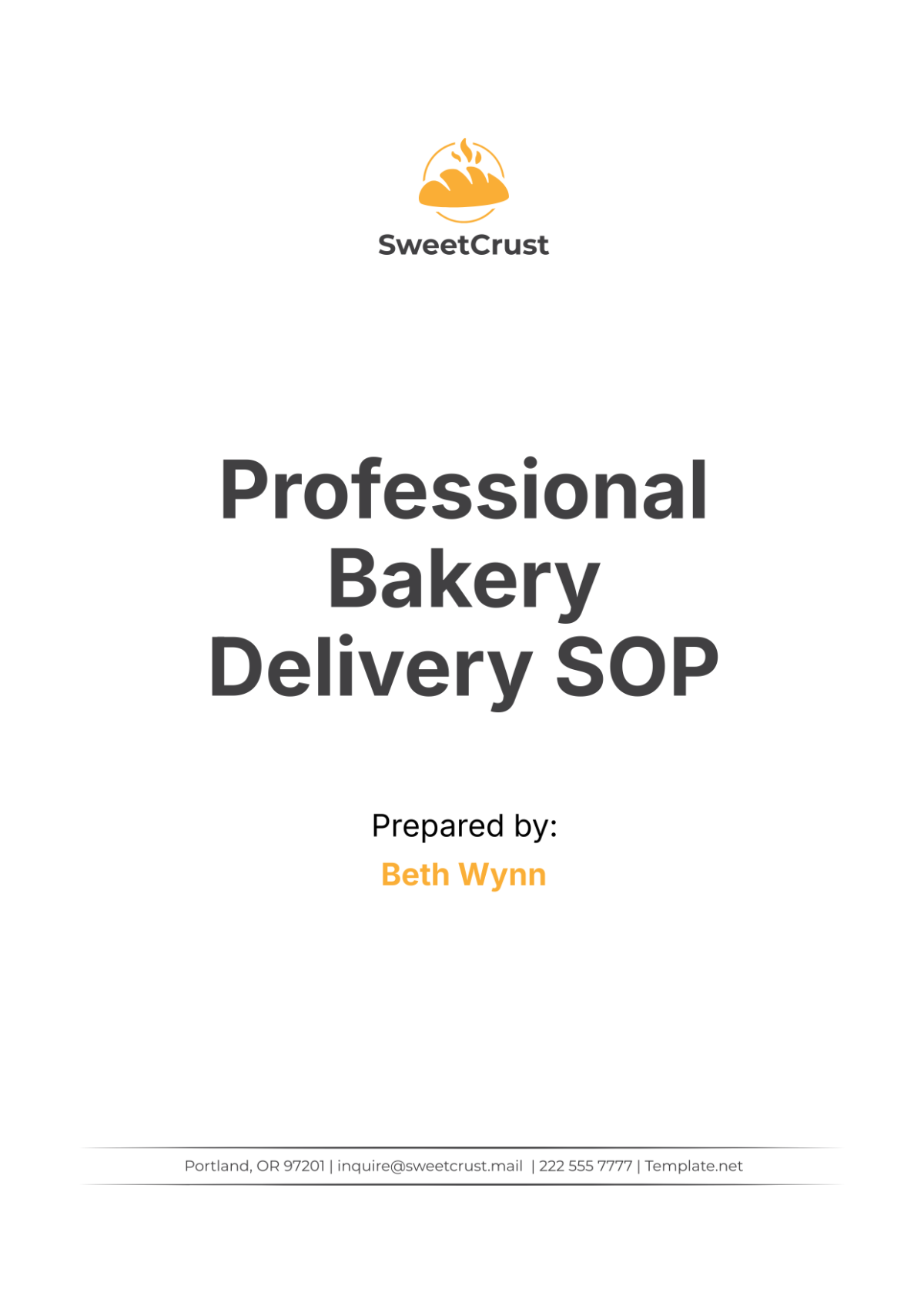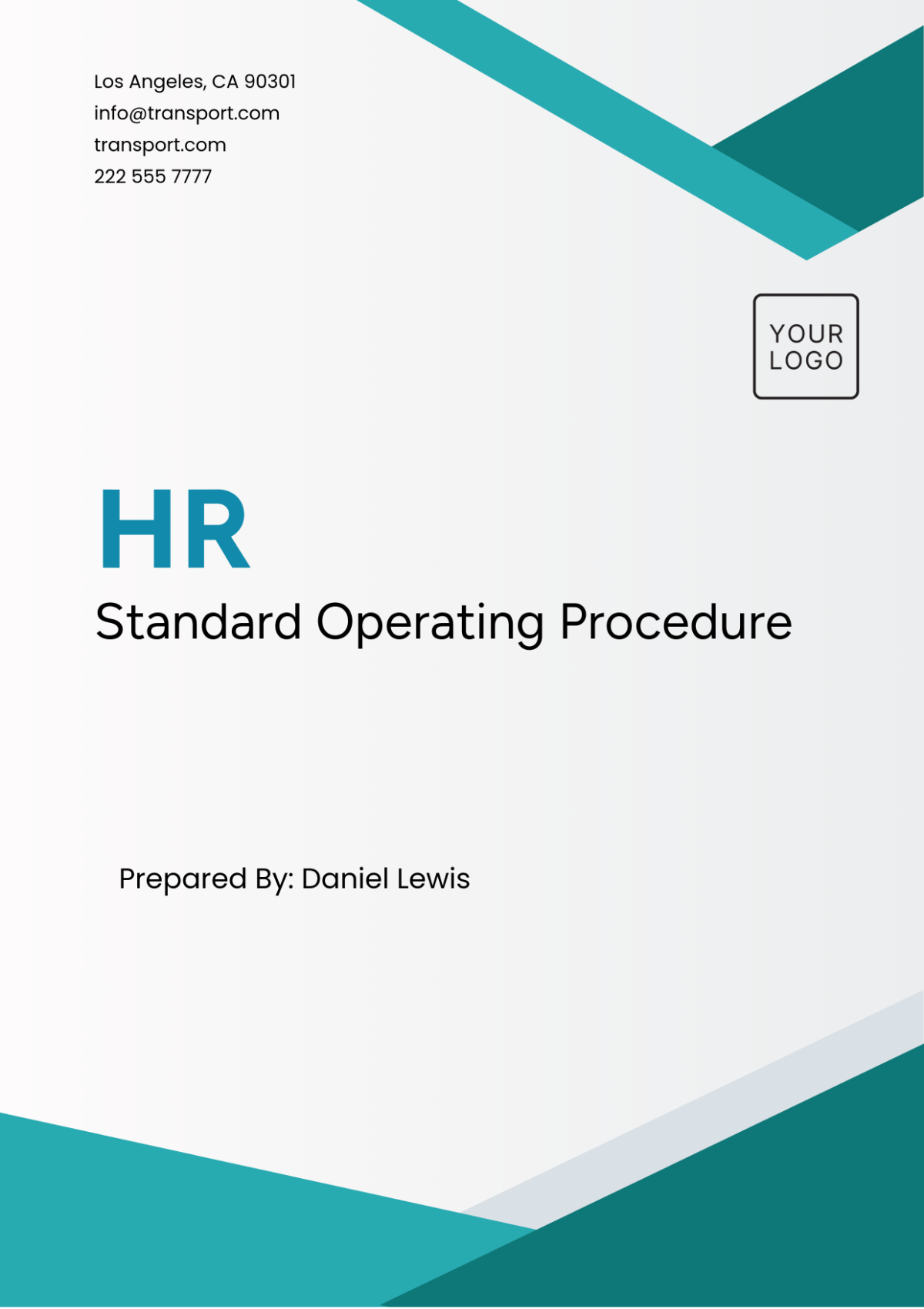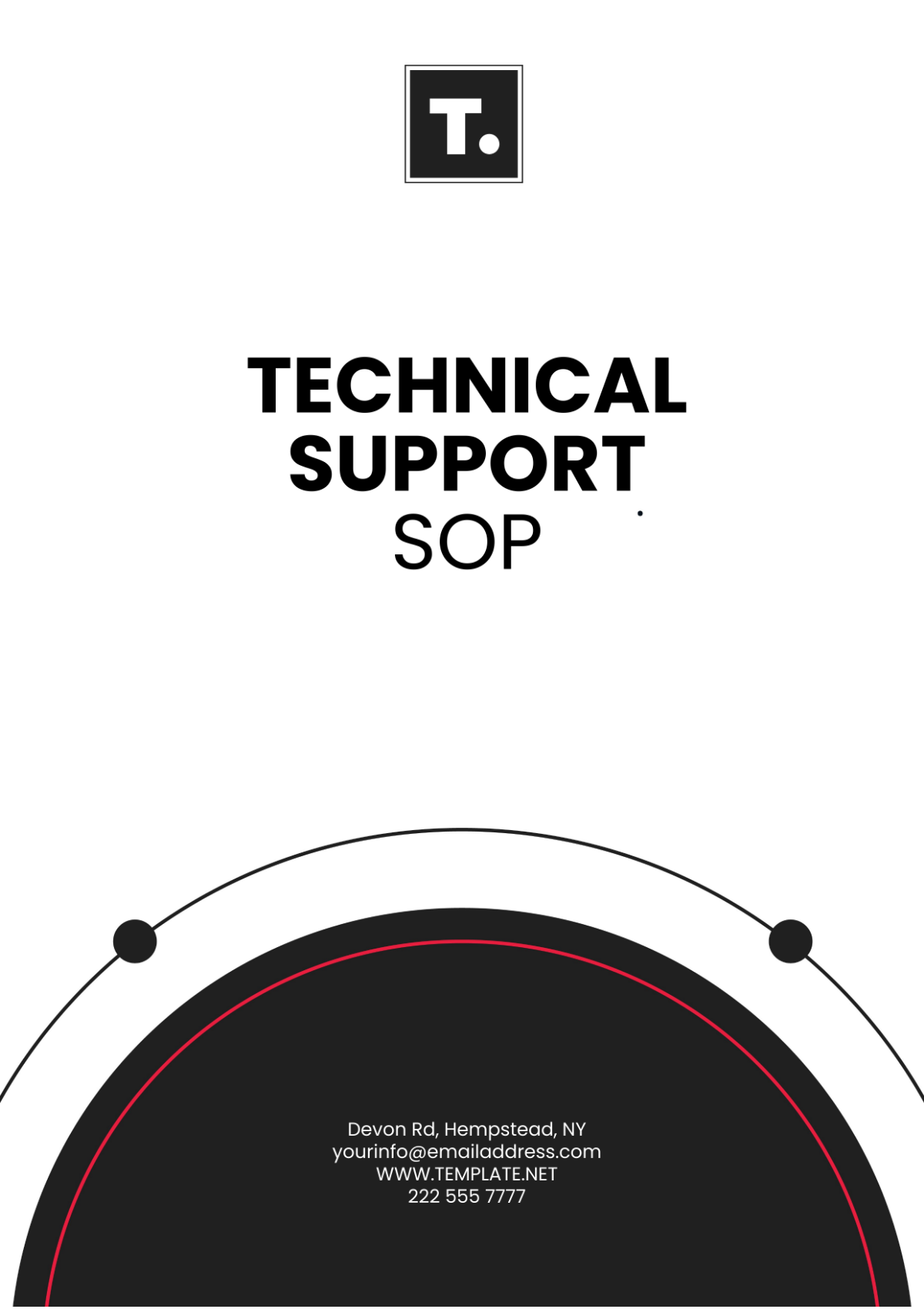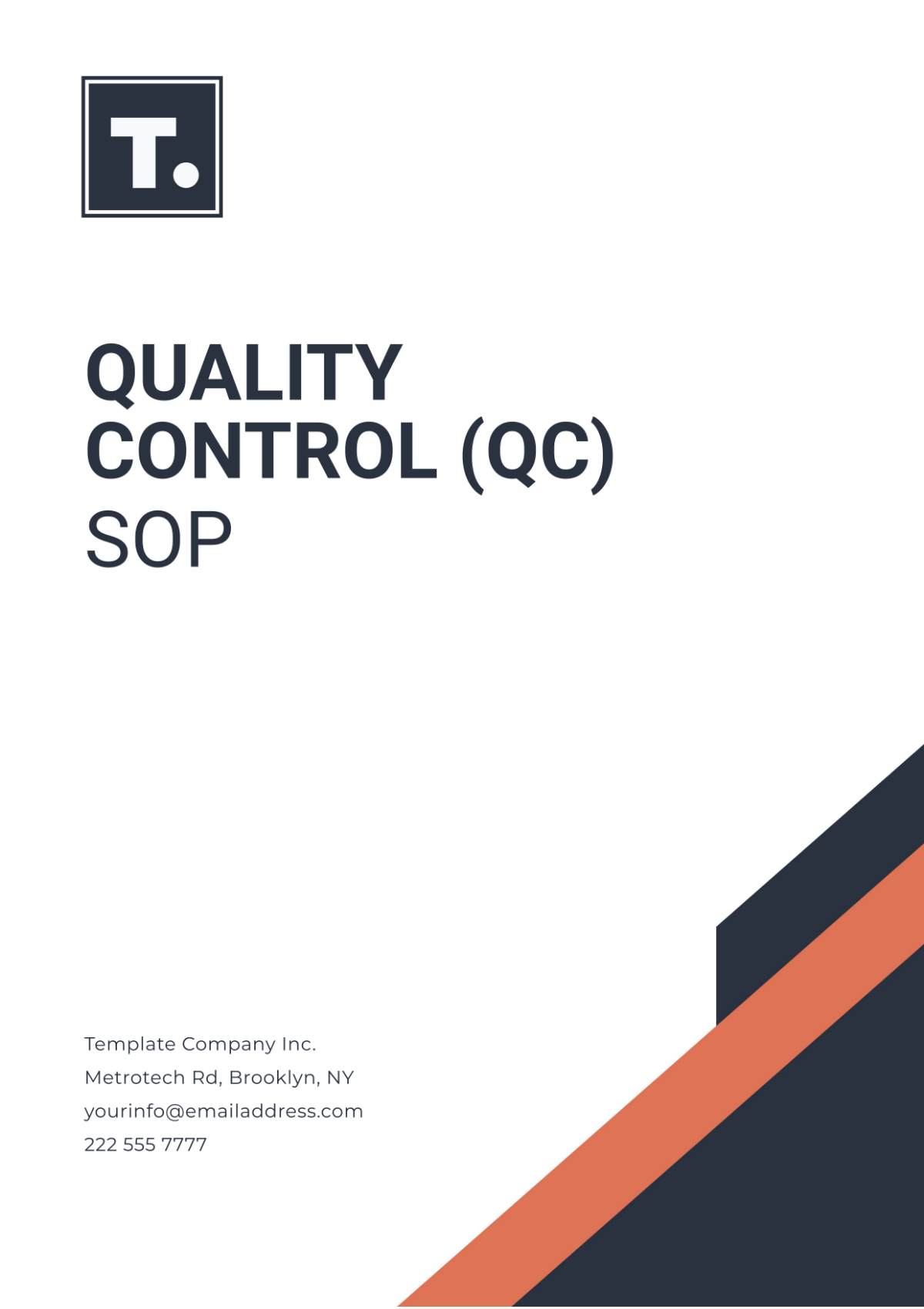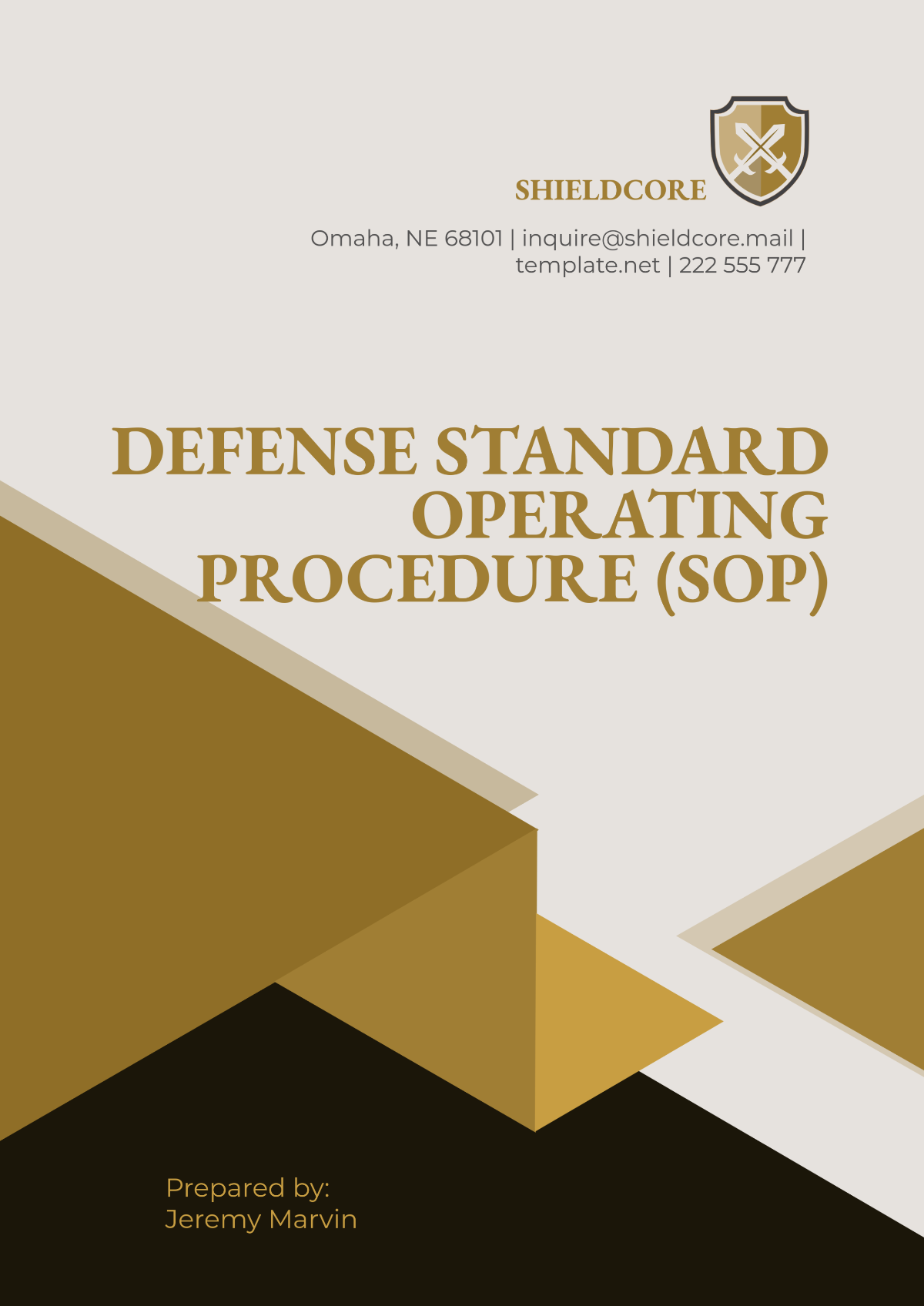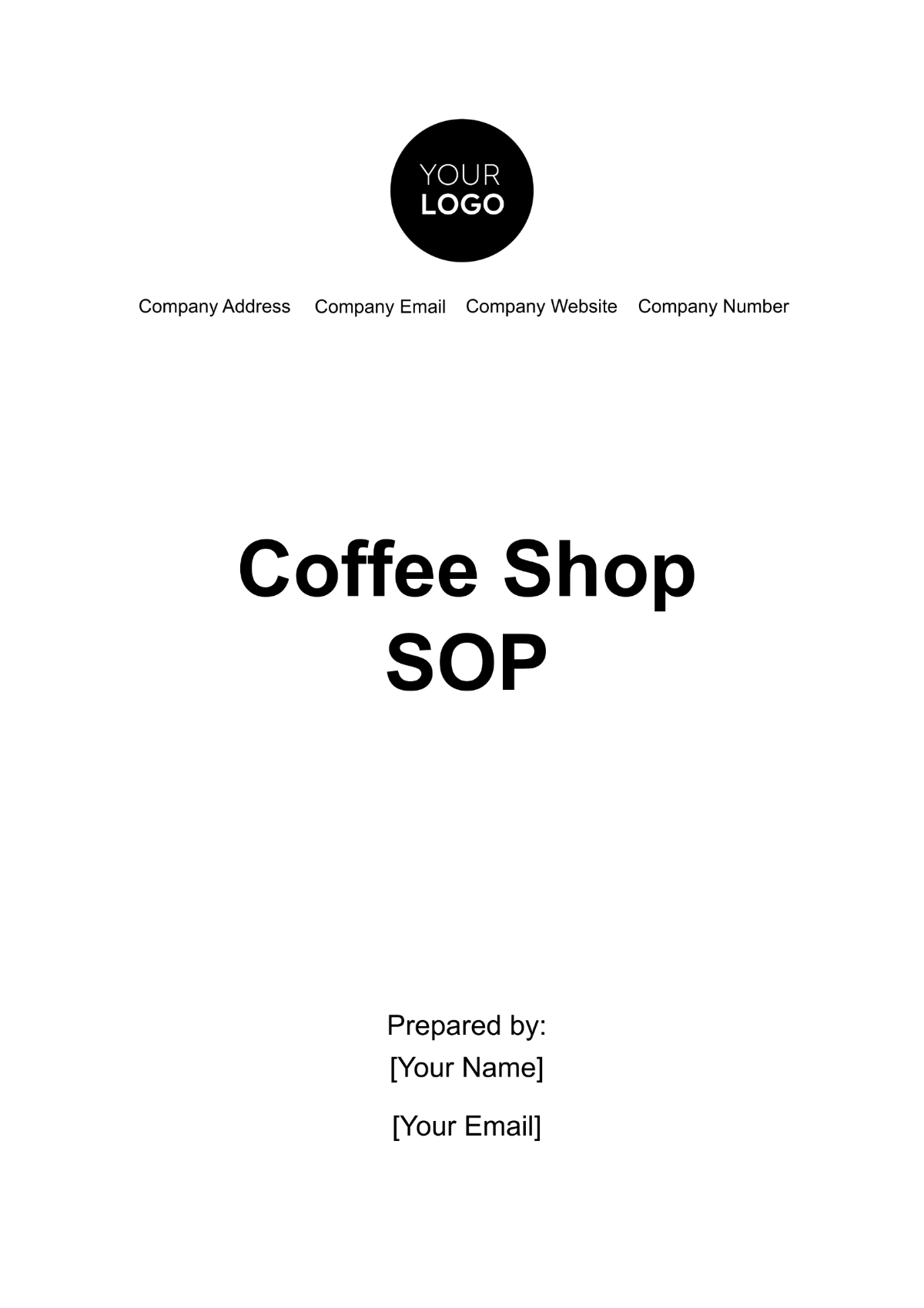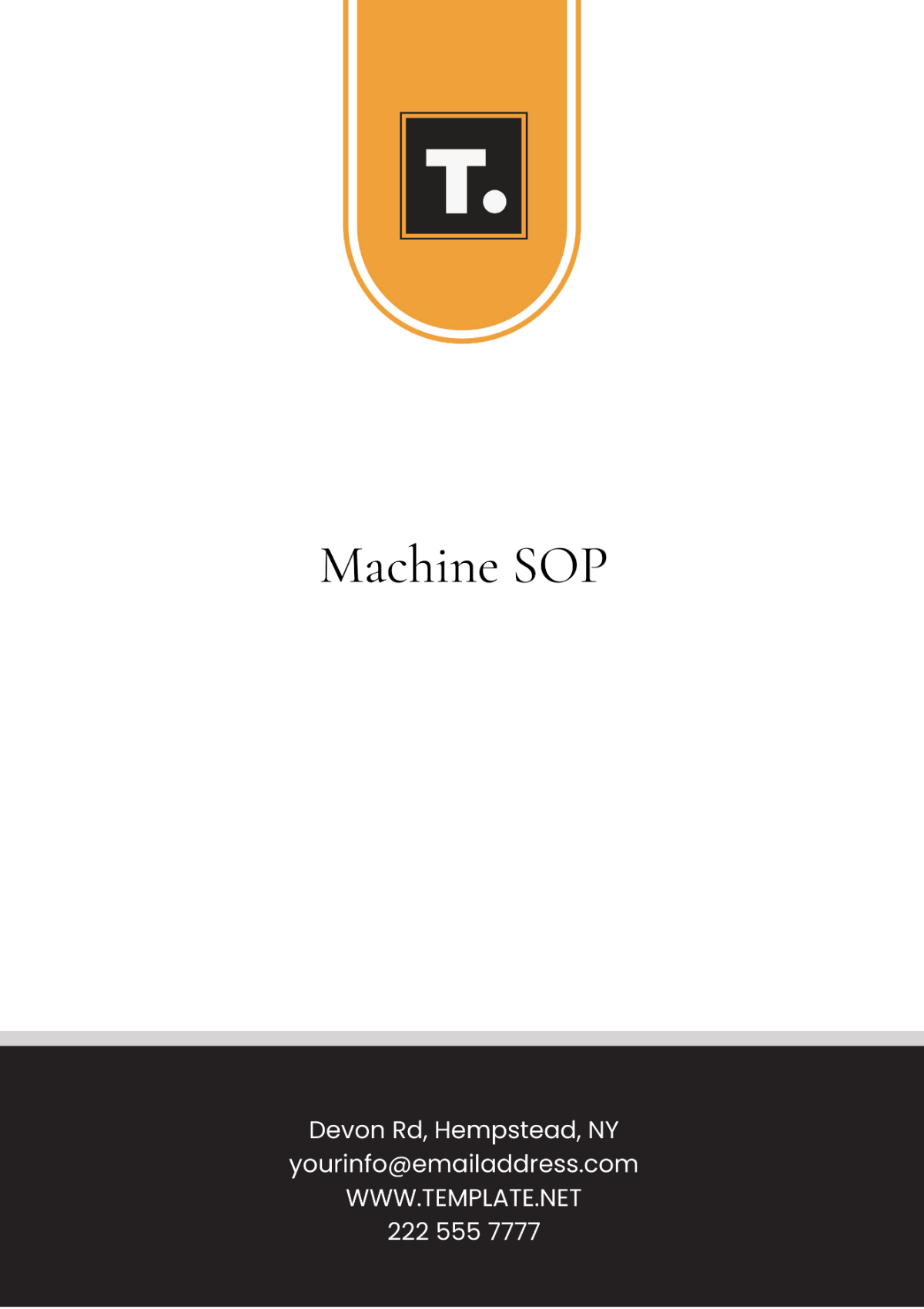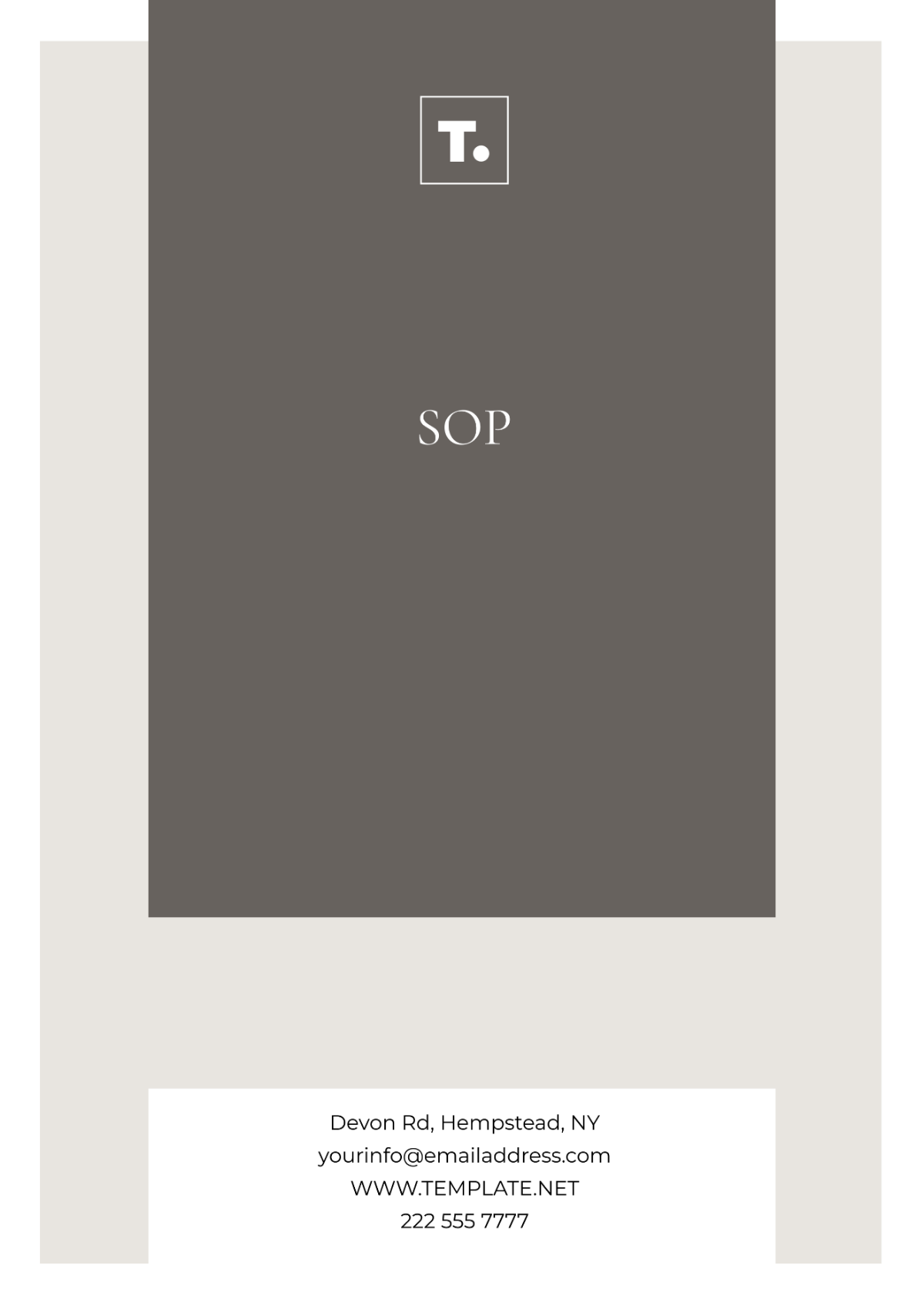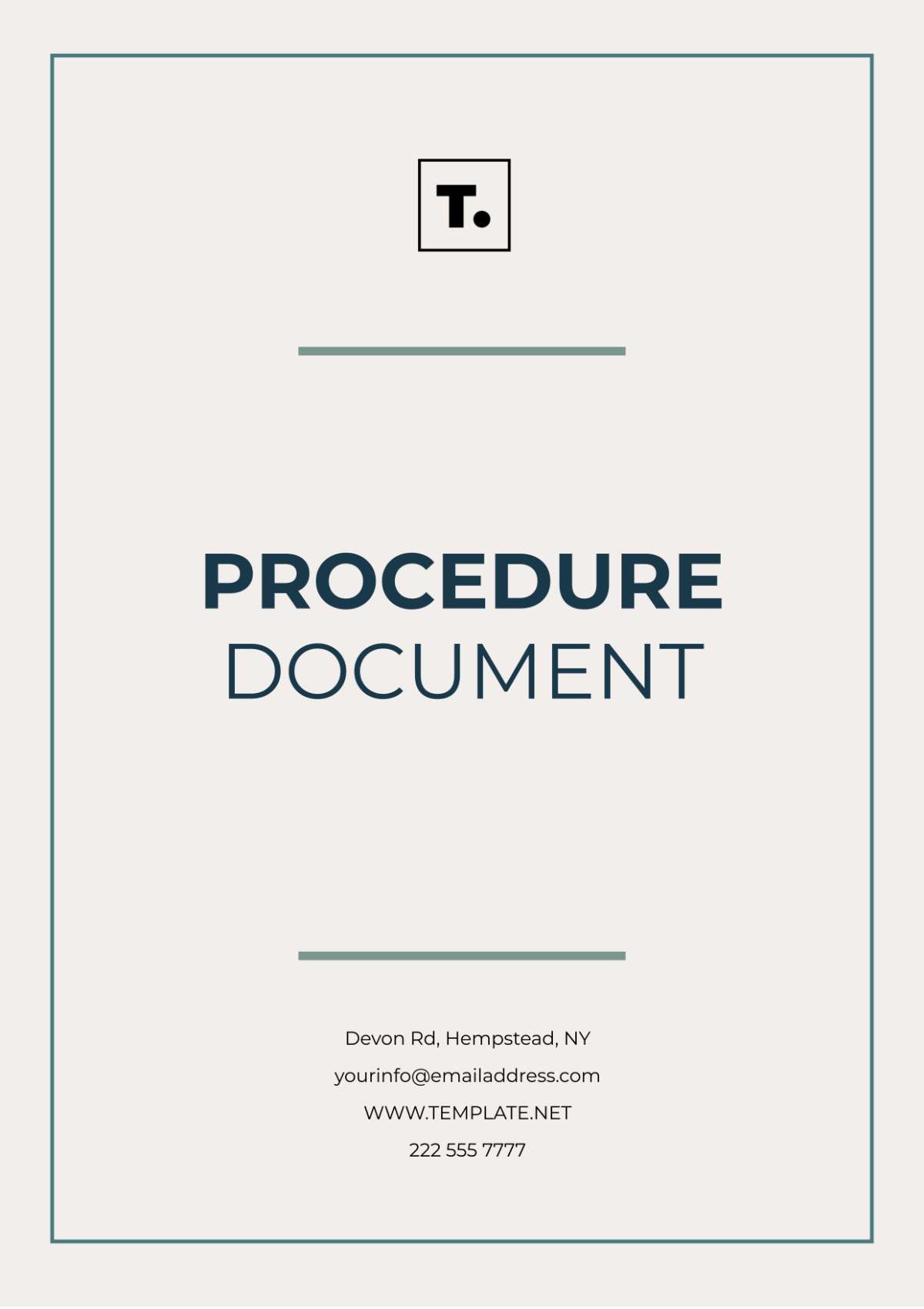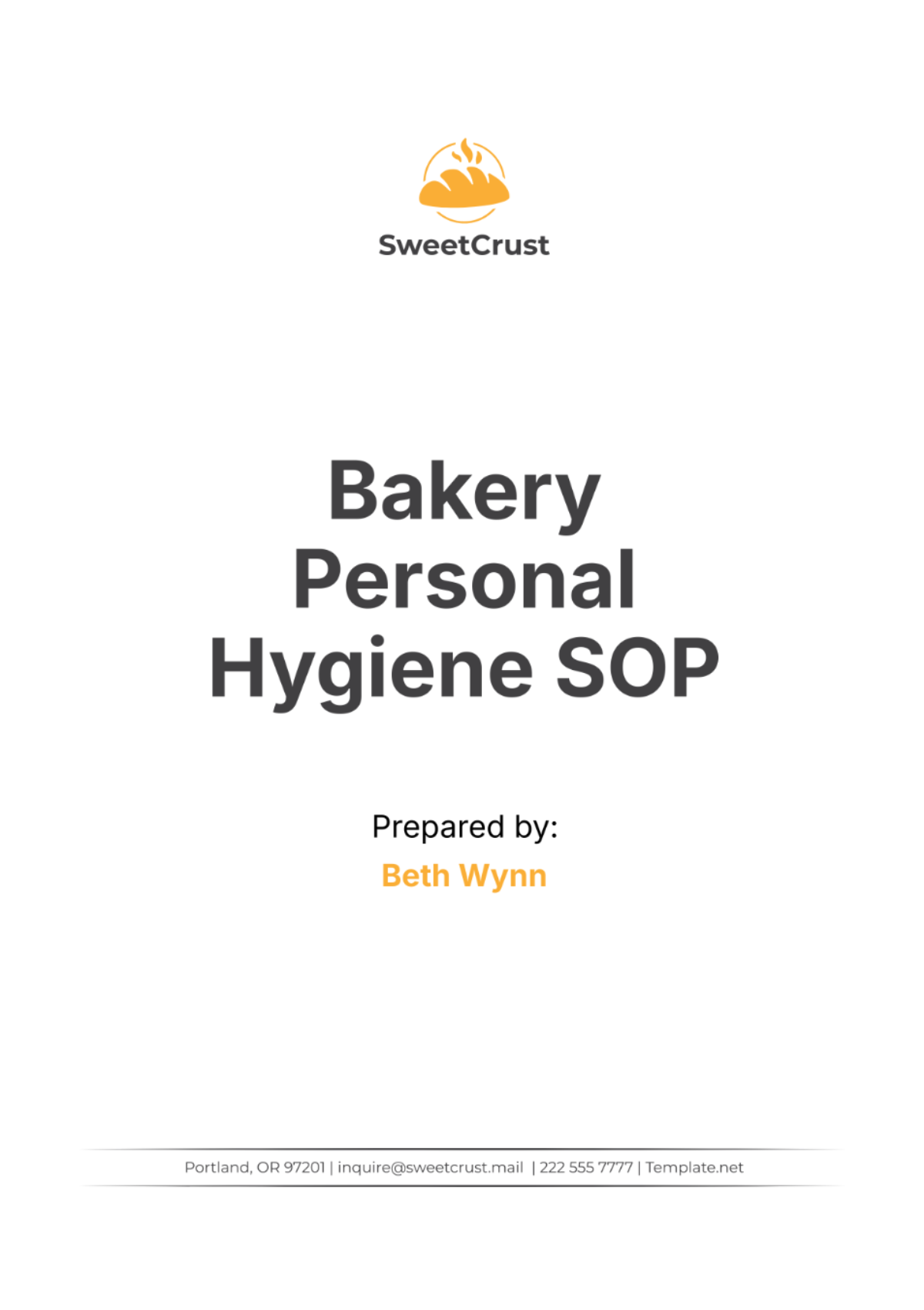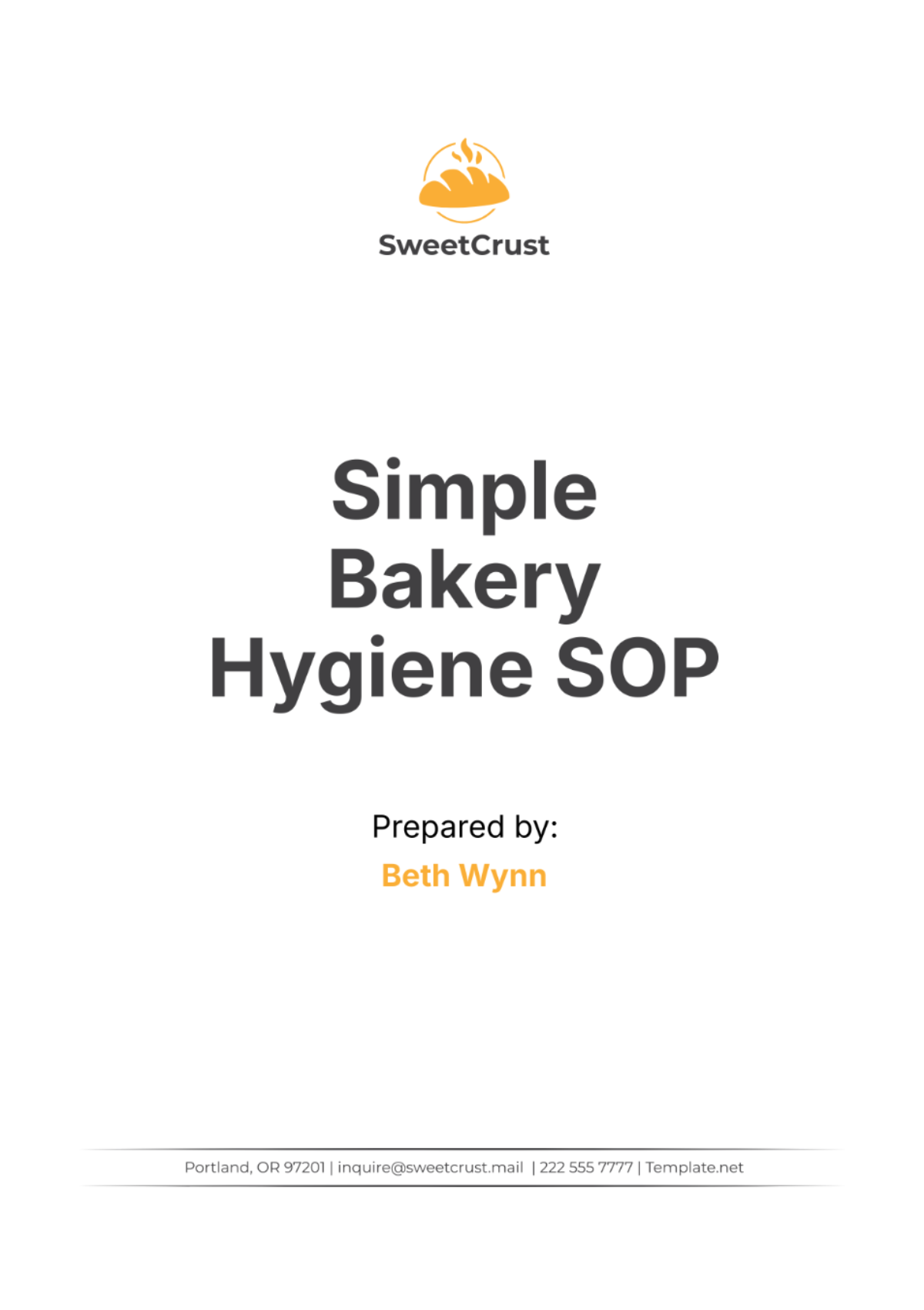Bakery SOP
I. Introduction
A. Purpose
The purpose of this Standard Operating Procedure (SOP) is to establish a comprehensive framework for the daily operations of [Your Company Name] Bakery. This document is essential for maintaining consistency in product quality, ensuring high standards of hygiene, and promoting a safe and efficient working environment. By adhering to these procedures, we aim to deliver exceptional bakery products and services that meet or exceed customer expectations. This SOP also serves to guide new and existing employees in their roles and responsibilities, contributing to the overall success of the bakery.
B. Scope
This SOP applies to all employees of [Your Company Name] Bakery, including bakers, kitchen staff, cleaners, and management personnel. It encompasses all aspects of bakery operations, from ingredient sourcing and preparation to baking, packaging, and customer service. By covering these areas in detail, the SOP ensures that every facet of bakery operations is standardized and optimized for efficiency. The scope also includes procedures for handling emergencies, maintaining equipment, and managing inventory, providing a holistic approach to bakery management.
C. Responsibilities
Bakery Manager: The Bakery Manager is responsible for overseeing the daily operations of the bakery. This includes ensuring that all staff adhere to the SOP, managing staff schedules, and addressing customer complaints. The Bakery Manager also plays a key role in strategic planning and decision-making, ensuring that the bakery operates smoothly and meets its business objectives. Regular meetings with staff are conducted to discuss performance, address any issues, and implement improvements.
Head Baker: The Head Baker supervises all baking activities, including the preparation, mixing, and baking of products. This role involves training new bakers, ensuring adherence to recipes and quality standards, and managing the inventory of baking ingredients. The Head Baker is also responsible for troubleshooting any issues that arise during the baking process and making adjustments as necessary to maintain product consistency and quality.
Kitchen Staff: Kitchen Staff members are responsible for executing baking procedures as outlined in the SOP. Their duties include preparing ingredients, following recipes, maintaining cleanliness in the kitchen, and assisting with inventory management. Kitchen Staff must ensure that all tasks are performed efficiently and that products are produced according to the required specifications. They also play a critical role in supporting the Head Baker and responding to any operational challenges.
Cleaners: Cleaners are tasked with maintaining the hygiene and cleanliness of the bakery premises. This includes cleaning work surfaces, equipment, utensils, and floors. Cleaners must adhere to the cleaning schedule and ensure that all areas are free from contaminants. Their role is crucial in preventing cross-contamination and ensuring a safe environment for both staff and customers.
Customer Service Staff: Customer Service Staff interact directly with customers, managing sales transactions, answering queries, and addressing any concerns. They are responsible for providing a positive customer experience and ensuring that customer needs are met promptly and efficiently. Their role includes handling special requests, processing orders, and maintaining a welcoming atmosphere in the sales area.
II. Safety and Hygiene
A. Personal Hygiene
All staff members must adhere to strict personal hygiene standards to prevent contamination and ensure food safety. Hands must be washed thoroughly with soap and water before starting work, after handling raw materials, and after using the restroom. Proper handwashing techniques, including scrubbing all surfaces and using disposable paper towels, are essential for effective hygiene.
Hair must be kept neatly tied back or covered with a hairnet to prevent hair from falling into food products. Staff should wear clean uniforms, and any soiled clothing must be changed immediately. Personal hygiene also includes maintaining trimmed nails and avoiding the use of strong perfumes or colognes that could affect the smell and taste of bakery products.
Jewelry, including rings, bracelets, and watches, must be removed before entering the bakery area. This measure helps prevent contamination and ensures that jewelry does not interfere with food preparation. Staff should also avoid wearing artificial nails or nail polish, as these can pose a risk of contamination.
B. Workplace Safety
Staff must receive training in the safe operation of all bakery equipment, including ovens, mixers, and slicers. Proper training ensures that staff are familiar with the equipment's functions and safety features, reducing the risk of accidents and injuries. Safety procedures for operating equipment, including using guards and following manufacturer instructions, should be clearly communicated.
Protective gear, such as gloves and aprons, must be worn when handling hot or sharp equipment. Heat-resistant gloves should be used when working with hot trays or oven doors, and cut-resistant gloves should be worn when handling sharp utensils. Aprons should be worn to protect clothing and prevent direct contact with food.
Any spills or accidents should be addressed immediately to prevent slips, falls, or injuries. Wet floors should be cleaned promptly, and warning signs should be placed in areas where spills have occurred. Staff should be trained to report any hazards or unsafe conditions to the Bakery Manager to ensure timely resolution.
C. Equipment Maintenance
Regular inspection and maintenance of all bakery equipment are crucial for ensuring that it operates efficiently and safely. Scheduled maintenance tasks, such as checking for wear and tear, lubricating moving parts, and calibrating machines, should be performed according to the manufacturer's recommendations. A maintenance log should be maintained to track all inspections and repairs.
Equipment must be cleaned and sanitized after each use to prevent cross-contamination and ensure food safety. Cleaning procedures should be followed meticulously, including disassembling equipment when necessary to reach all surfaces. Sanitizing agents approved for food contact surfaces should be used to eliminate any potential pathogens.
Faulty equipment should be reported immediately to the Bakery Manager for repair or replacement. Staff should be trained to recognize signs of equipment malfunction, such as unusual noises, inconsistent performance, or visible damage. In the event of equipment failure, alternative procedures should be implemented to minimize disruption to operations.
III. Ingredient Management
A. Sourcing and Receiving Ingredients
All ingredients must be sourced from approved suppliers who meet [Your Company Name] Bakery's quality standards. Supplier selection should be based on factors such as product quality, reliability, and compliance with food safety regulations. Regular audits of suppliers should be conducted to ensure that they continue to meet the bakery's standards.
Upon receipt, ingredients should be inspected for quality, including checking expiration dates, signs of contamination, and correct quantities. Any discrepancies or issues with the ingredients should be documented and addressed with the supplier. Ingredients that do not meet quality standards should be rejected and returned.
Substandard or damaged ingredients must be reported to the supplier immediately. Detailed records of returns and replacements should be maintained to track the resolution of issues and ensure that ingredient quality is consistently high. Any significant issues with ingredient quality should be reviewed to identify potential improvements in the sourcing process.
B. Storage
Ingredients must be stored in designated areas according to their type, such as dry goods, refrigerated items, and frozen items. Proper storage conditions, including temperature control and humidity levels, should be maintained to preserve the quality and safety of the ingredients. Storage areas should be organized to facilitate easy access and prevent cross-contamination.
All storage areas must be kept clean and organized to prevent contamination and facilitate inventory management. Regular cleaning schedules should be established for storage areas, including shelving and floors. Any spills or leaks should be cleaned promptly to prevent contamination of other ingredients.
Ingredients must be labeled with the date of receipt and used in a "first-in, first-out" (FIFO) order to ensure freshness. Labels should include product names, expiration dates, and batch numbers for traceability. Inventory checks should be conducted regularly to monitor ingredient usage and prevent spoilage.
C. Inventory Management
Regular inventory checks must be conducted to monitor ingredient levels and ensure that stock is replenished in a timely manner. Inventory records should be updated accurately to reflect current stock levels and usage. The Head Baker is responsible for coordinating with suppliers to place orders and manage stock levels effectively.
The Head Baker is responsible for maintaining accurate records of ingredient usage and coordinating with suppliers for restocking. Inventory records should include details of all transactions, such as purchases, usage, and returns. Accurate record-keeping is essential for managing inventory levels and ensuring that sufficient stock is available for production.
Any discrepancies in inventory should be investigated and resolved promptly. Discrepancies could include differences between recorded and actual stock levels or issues with ingredient quality. Investigations should include reviewing records, conducting physical counts, and identifying any potential causes of discrepancies.
IV. Baking Processes
A. Preparation
Before starting any baking activities, all work surfaces, equipment, and utensils must be cleaned and sanitized. This ensures that no contaminants are introduced into the baking process and maintains a hygienic environment. Cleaning procedures should include washing surfaces with soap and water, followed by sanitizing with approved agents.
Ingredients must be measured accurately using calibrated scales and measuring tools to ensure consistency in recipes. Accurate measurement is crucial for achieving the desired texture, flavor, and quality of the finished products. Calibration of measuring tools should be checked regularly to ensure accuracy.
Preheating of ovens and other equipment should be done according to the specific requirements of each recipe. Ovens should be preheated to the correct temperature before baking begins to ensure even cooking. Any adjustments to temperature or settings should be made based on the recipe requirements and the type of product being baked.
B. Mixing and Kneading
Follow the specific recipe instructions for combining ingredients, paying close attention to the order and timing of each addition. Recipe instructions should be followed precisely to achieve the desired consistency and flavor of the dough or batter. Mixing and kneading techniques should be adjusted based on the type of product being prepared.
Use the appropriate mixing and kneading techniques to achieve the desired dough consistency and texture. Techniques such as folding, beating, and stretching should be used as specified in the recipe. The consistency of the dough should be monitored throughout the mixing and kneading process.
Regularly check the dough for signs of proper development, such as elasticity and smoothness. Dough should be tested for characteristics such as stickiness, stretchiness, and smoothness to ensure that it is ready for proofing or baking. Adjustments to mixing or kneading may be necessary to achieve the desired dough properties.
C. Proofing
Dough should be allowed to proof in a controlled environment with the appropriate temperature and humidity levels. Proofing conditions should be monitored closely to ensure that the dough rises properly and develops the desired texture. Temperature and humidity levels should be adjusted based on the type of dough and the recipe requirements.
The duration of proofing should be monitored carefully to ensure the dough reaches the optimal rise. Overproofing or underproofing can affect the texture and quality of the final product. Proofing times should be adjusted based on the dough's appearance and the specific requirements of the recipe.
Overproofed or underproofed dough should be adjusted or discarded to maintain product quality. Dough that has risen too much or too little may not produce the desired results. Adjustments to proofing times or conditions should be made to ensure that the dough is properly prepared for baking.
D. Baking
Place the prepared dough or batter into preheated ovens, ensuring even spacing to allow proper air circulation. Proper placement in the oven helps ensure that baked goods cook evenly and develop a consistent texture. Space between items should be adjusted based on their size and the type of oven being used.
Monitor the baking process closely, adjusting oven temperatures and positions as needed to ensure even baking. Regular checks should be made to ensure that baked goods are cooking properly and not burning or undercooking. Oven temperatures should be adjusted based on the product's appearance and baking time.
Use timers and visual cues to determine when baked goods are done, ensuring they are cooked through without being overbaked. Timers should be set according to recipe instructions, and visual checks should be made to ensure that products are golden brown and have the desired texture. Testing methods such as inserting a toothpick or skewer can help determine doneness.
E. Cooling and Packaging
Baked goods should be cooled on wire racks to allow even cooling and prevent sogginess. Cooling racks should be used to ensure that air circulates around the baked goods, preventing moisture buildup and maintaining product quality. Baked goods should be left to cool for the recommended time before packaging.
Once cooled, products must be packaged in appropriate materials to maintain freshness and prevent contamination. Packaging materials should be selected based on the type of product and its intended shelf life. Packaging should also be done in a clean environment to prevent contamination.
Labels indicating the product name, date of production, and expiration date should be affixed to all packaged goods. Labels should be clear, accurate, and include all required information for consumer safety and traceability. Any special storage instructions or allergen information should also be included on the label.
V. Quality Control
A. Product Inspection
All baked goods must undergo a thorough inspection for quality, including checking for proper texture, appearance, and taste. Inspection should be conducted by the Head Baker or a designated quality control staff member to ensure that products meet [Your Company Name] Bakery's standards. Consistency in appearance, texture, and flavor is crucial for maintaining product quality.
Any products that do not meet [Your Company Name] Bakery's quality standards must be discarded or reworked. Products that are overbaked, underbaked, or otherwise defective should be removed from the production line to prevent them from reaching customers. Reworking procedures should be implemented for products that can be salvaged.
Regular taste tests should be conducted to ensure consistency and quality across all products. Taste tests should involve sampling a representative selection of products to assess flavor, texture, and overall quality. Feedback from taste tests should be used to make any necessary adjustments to recipes or processes.
B. Customer Feedback
Customer feedback should be actively sought and recorded to identify areas for improvement. Feedback mechanisms, such as comment cards, online surveys, and direct interactions, should be used to gather input from customers. Analyzing feedback helps identify trends and areas where changes may be needed.
Any complaints or suggestions from customers should be reviewed by the Bakery Manager and addressed promptly. Customer complaints should be investigated thoroughly, and appropriate actions should be taken to resolve issues. Suggestions for improvement should be considered and implemented where feasible.
Positive feedback should be shared with staff to encourage high performance and morale. Recognizing and celebrating positive feedback helps motivate staff and reinforces the importance of providing excellent customer service. Positive feedback should be communicated through staff meetings, newsletters, or other channels.
VI. Customer Service
A. Interaction with Customers
All staff should greet customers warmly and provide prompt assistance. A friendly and welcoming attitude helps create a positive customer experience and encourages repeat business. Staff should be trained to offer assistance proactively and respond to customer needs effectively.
Customer inquiries about products, ingredients, and baking processes should be answered accurately and courteously. Staff should be knowledgeable about the bakery's products and be able to provide detailed information as needed. Clear communication helps build trust and confidence with customers.
Any special requests or orders should be handled efficiently and communicated clearly to the baking team. Special orders should be confirmed with customers, and any specific requirements should be documented and relayed to the production staff. Efficient handling of special requests ensures that customer expectations are met.
B. Sales Transactions
Ensure that the point-of-sale (POS) system is functioning correctly and that all transactions are processed accurately. Regular checks should be conducted to verify that the POS system is operating properly and that transactions are recorded correctly. Staff should be trained to use the POS system efficiently.
Provide customers with receipts for their purchases and handle any payment issues promptly. Receipts should include detailed information about the transaction, including the date, items purchased, and amount paid. Payment issues, such as discrepancies or errors, should be resolved quickly to ensure customer satisfaction.
Maintain a clean and organized sales area to enhance the customer experience. The sales area should be tidy and free of clutter, with products displayed attractively. Regular cleaning and organization of the sales area contribute to a pleasant shopping experience for customers.
C. Handling Complaints
Listen to customer complaints attentively and empathize with their concerns. Demonstrating understanding and empathy helps build rapport with customers and shows that their feedback is valued. Staff should be trained to handle complaints professionally and respectfully.
Offer appropriate solutions, such as refunds, replacements, or discounts, to resolve the issue satisfactorily. Solutions should be tailored to the nature of the complaint and the customer's preferences. Prompt resolution of complaints helps restore customer satisfaction and loyalty.
Record all complaints and resolutions for future reference and to identify trends that may require attention. Complaints should be documented in a log or database, including details of the issue and the actions taken to resolve it. Analyzing complaint data helps identify recurring issues and areas for improvement.
VII. Cleanliness and Sanitation
A. Daily Cleaning Schedule
A daily cleaning schedule must be established and followed to maintain high standards of hygiene throughout the bakery. The schedule should outline specific tasks, including sweeping and mopping floors, cleaning work surfaces, washing utensils, and sanitizing equipment. Adhering to the schedule ensures that cleanliness is consistently maintained.
Tasks should be assigned to specific staff members, and completion should be monitored to ensure that all cleaning activities are carried out effectively. Regular checks should be conducted to verify that cleaning tasks have been completed as scheduled. Any issues or concerns should be addressed promptly.
All cleaning activities should be recorded in a cleaning log for accountability. The cleaning log should include details of the tasks performed, the staff members responsible, and the time of completion. Accurate record-keeping helps ensure that cleaning procedures are followed consistently and provides a reference for any issues that arise.
B. Deep Cleaning
Deep cleaning should be conducted weekly, including thorough cleaning of ovens, refrigerators, and storage areas. Deep cleaning involves more intensive procedures, such as disassembling equipment, scrubbing surfaces, and cleaning hard-to-reach areas. Regular deep cleaning helps maintain high hygiene standards and extends the lifespan of equipment.
Any equipment that cannot be cleaned daily should be disassembled and cleaned during deep cleaning sessions. Equipment such as mixers and ovens should be taken apart to reach all components and ensure thorough cleaning. Detailed cleaning procedures should be followed to prevent contamination and maintain equipment functionality.
Pest control measures should be implemented during deep cleaning to prevent infestations. Regular inspections should be conducted to identify any signs of pests, and appropriate measures should be taken to address any issues. Pest control strategies may include sealing entry points, using traps, and maintaining a clean environment.
C. Waste Management
Waste bins should be placed strategically throughout the bakery and emptied regularly to prevent overflow. Waste bins should be easily accessible to staff and clearly labeled to indicate the type of waste they contain. Regular emptying of bins helps maintain cleanliness and prevents unpleasant odors.
Separate bins should be used for different types of waste, such as organic waste, recyclables, and general waste. Proper segregation of waste helps facilitate recycling and ensures that waste is disposed of correctly. Staff should be trained to use the correct bins for different types of waste.
Waste disposal must be conducted in accordance with local regulations to ensure environmental compliance. Disposal procedures should follow legal requirements and best practices for waste management. Documentation of waste disposal activities should be maintained for reference and regulatory compliance.
VIII. Staff Training and Development
A. Orientation for New Employees
New employees must undergo an orientation program to familiarize them with [Your Company Name] Bakery's SOP, policies, and procedures. The orientation should include a comprehensive introduction to the bakery's operations, including safety procedures, job responsibilities, and company values. Orientation sessions should be conducted by the Bakery Manager or a designated trainer.
During orientation, new employees should receive training on personal hygiene, equipment usage, and food safety practices. Training should cover all aspects of the bakery's operations, including specific tasks and responsibilities. Practical demonstrations and hands-on training should be provided to ensure that new employees are comfortable with their roles.
New employees should be introduced to their team members and given an overview of the bakery's organizational structure. Understanding the roles and responsibilities of team members helps new employees integrate into the team and understand how their role fits into the overall operation of the bakery. Team-building activities or meetings may be included in the orientation program.
B. Ongoing Training
Regular training sessions should be conducted to update staff on new procedures, techniques, and regulations. Training should be provided on an ongoing basis to ensure that staff remain informed about any changes or updates. Training sessions may include workshops, seminars, or online courses.
Staff should be encouraged to participate in industry conferences, workshops, and other professional development opportunities. Participation in external training events helps staff stay current with industry trends and best practices. The Bakery Manager should support staff in pursuing relevant training opportunities.
Performance reviews should be conducted periodically to assess staff skills and identify areas for improvement. Reviews should include feedback on job performance, adherence to SOP, and areas where additional training may be needed. Performance reviews provide an opportunity for staff to discuss their progress and set goals for development.
C. Certification and Compliance
All staff must be certified in food safety and hygiene practices as required by local regulations. Certification programs should be selected based on their relevance to the bakery's operations and regulatory requirements. Certification ensures that staff are knowledgeable about food safety standards and best practices.
Staff should be trained to comply with health and safety regulations, including proper handling of food, sanitation practices, and emergency procedures. Training should cover all relevant regulations and best practices for maintaining a safe and hygienic environment. Compliance with regulations is essential for preventing foodborne illnesses and ensuring the safety of customers.
Records of staff training and certifications should be maintained for verification and regulatory compliance. Documentation should include details of training courses, certification dates, and expiration dates. Maintaining accurate records helps ensure that staff are up-to-date with their training and certification requirements.
IX. Record Keeping
A. Documentation
Maintain accurate records of all bakery operations, including ingredient purchases, inventory levels, and production schedules. Documentation should include detailed information about each aspect of the bakery's operations, including dates, quantities, and any relevant notes. Accurate record-keeping helps track performance and manage resources effectively.
Records of staff training, performance reviews, and certifications should be kept up-to-date. Documentation should include information about training sessions, performance evaluations, and certification statuses. Keeping records current ensures that staff qualifications and training are properly tracked.
All records should be stored securely to protect sensitive information and ensure confidentiality. Records should be kept in a designated location, such as a locked filing cabinet or a secure digital system. Access to records should be restricted to authorized personnel only.
B. Reporting
Regular reports should be generated to review bakery performance, including sales data, customer feedback, and inventory levels. Reports should include analysis of key performance indicators, trends, and any issues that need to be addressed. Regular reporting helps monitor performance and identify areas for improvement.
Reports should be reviewed by the Bakery Manager and used to make informed decisions about operations, staffing, and inventory management. Data from reports should be analyzed to identify opportunities for optimization and to address any areas of concern. Reports should be used to support strategic planning and decision-making.
Any discrepancies or issues identified in reports should be investigated and resolved promptly. Investigations should include reviewing relevant records, conducting interviews with staff, and identifying any potential causes of discrepancies. Resolution of issues should involve implementing corrective actions and monitoring for recurrence.
X. Emergency Procedures
A. Fire Safety
All staff must be trained in fire safety procedures, including the use of fire extinguishers and the bakery's evacuation plan. Training should cover the proper use of fire extinguishers, fire prevention measures, and the steps to take in case of a fire emergency. Regular fire drills should be conducted to ensure that staff are familiar with the procedures and can respond quickly.
Fire exits should be clearly marked and accessible at all times. Fire exit routes should be kept free of obstacles and clearly visible to ensure that staff and customers can evacuate quickly in case of an emergency. Exit signs and emergency lighting should be regularly inspected to ensure they are functioning properly.
Regular fire drills should be conducted to ensure that staff are prepared for emergencies. Fire drills should be scheduled periodically to simulate various emergency scenarios and test staff response. Drills should include practice evacuations, communication protocols, and roles and responsibilities during a fire emergency.
B. First Aid
A first aid kit should be available in the bakery, stocked with essential supplies such as bandages, antiseptics, and pain relievers. The first aid kit should be kept in a designated location that is easily accessible to all staff. Regular checks should be conducted to ensure that the kit is fully stocked and that supplies are not expired.
At least one staff member on each shift should be trained in basic first aid. First aid training should cover procedures for treating common injuries, such as cuts, burns, and sprains. Training should also include protocols for handling medical emergencies and calling for professional medical assistance if needed.
Any injuries that occur in the bakery should be reported immediately and recorded in an incident report. Incident reports should include details of the injury, the circumstances surrounding it, and any actions taken to address it. Incident reports should be reviewed regularly to identify any patterns or areas for improvement in safety procedures.
C. Equipment Failure
In case of equipment failure, the affected equipment should be turned off and labeled as out of order. Equipment that is malfunctioning or unsafe should be removed from service to prevent accidents or further damage. "Out of order" labels should be clearly visible and include details of the issue.
The Bakery Manager should be notified immediately to arrange for repairs or replacement of the faulty equipment. The Bakery Manager should coordinate with maintenance personnel or repair services to address the issue promptly. Temporary procedures should be implemented to minimize disruption to bakery operations while the equipment is being repaired.
Staff should follow alternative procedures to continue operations while the equipment is being repaired. Backup equipment or alternative methods should be used to ensure that production continues without significant interruption. Staff should be trained to adapt to temporary changes and maintain productivity.
XI. Continuous Improvement
A. Regular Reviews
The SOP should be reviewed regularly to ensure it remains relevant and effective. Reviews should be conducted at least annually or whenever significant changes occur in bakery operations, regulations, or industry standards. Regular reviews help ensure that the SOP remains up-to-date and aligned with current practices.
Staff should be encouraged to provide feedback on the SOP and suggest improvements. Feedback can be collected through surveys, meetings, or suggestion boxes. Staff input is valuable for identifying areas where the SOP can be enhanced and for addressing any concerns or issues.
Any changes to the SOP should be documented and communicated to all staff. Updated versions of the SOP should be distributed to staff, and training should be provided to ensure that everyone is aware of and understands the changes. Effective communication of changes helps ensure that staff adhere to the updated procedures.
B. Innovation
[Your Company Name] Bakery should stay updated with industry trends and innovations to remain competitive. Staying informed about new techniques, ingredients, and technologies helps the bakery adapt to changing market demands and maintain a competitive edge. Industry research and participation in trade shows or conferences can provide valuable insights.
Staff should be encouraged to experiment with new recipes, techniques, and equipment. Innovation can lead to the development of new products and improvements in existing processes. Staff should be provided with opportunities to try out new ideas and contribute to the bakery's growth and success.
Successful innovations should be integrated into the SOP to enhance product quality and efficiency. Any new techniques, recipes, or equipment that prove effective should be documented and incorporated into the SOP. Continuous improvement through innovation helps ensure that the bakery remains dynamic and responsive to market changes.
C. Customer Satisfaction
Customer satisfaction should be a key focus, with regular surveys and feedback mechanisms in place. Surveys can be conducted in-store, online, or through other channels to gather customer opinions and assess satisfaction levels. Feedback mechanisms should be designed to capture a wide range of customer experiences.
Strategies should be developed to address any areas of dissatisfaction and improve the overall customer experience. Analyzing customer feedback helps identify specific issues and opportunities for improvement. Action plans should be created to address concerns and enhance the quality of products and services.
A loyal customer base should be built through consistent quality, excellent service, and community engagement. Building customer loyalty involves providing high-quality products, maintaining excellent customer service, and actively participating in community events. Loyal customers are more likely to return and recommend the bakery to others.
